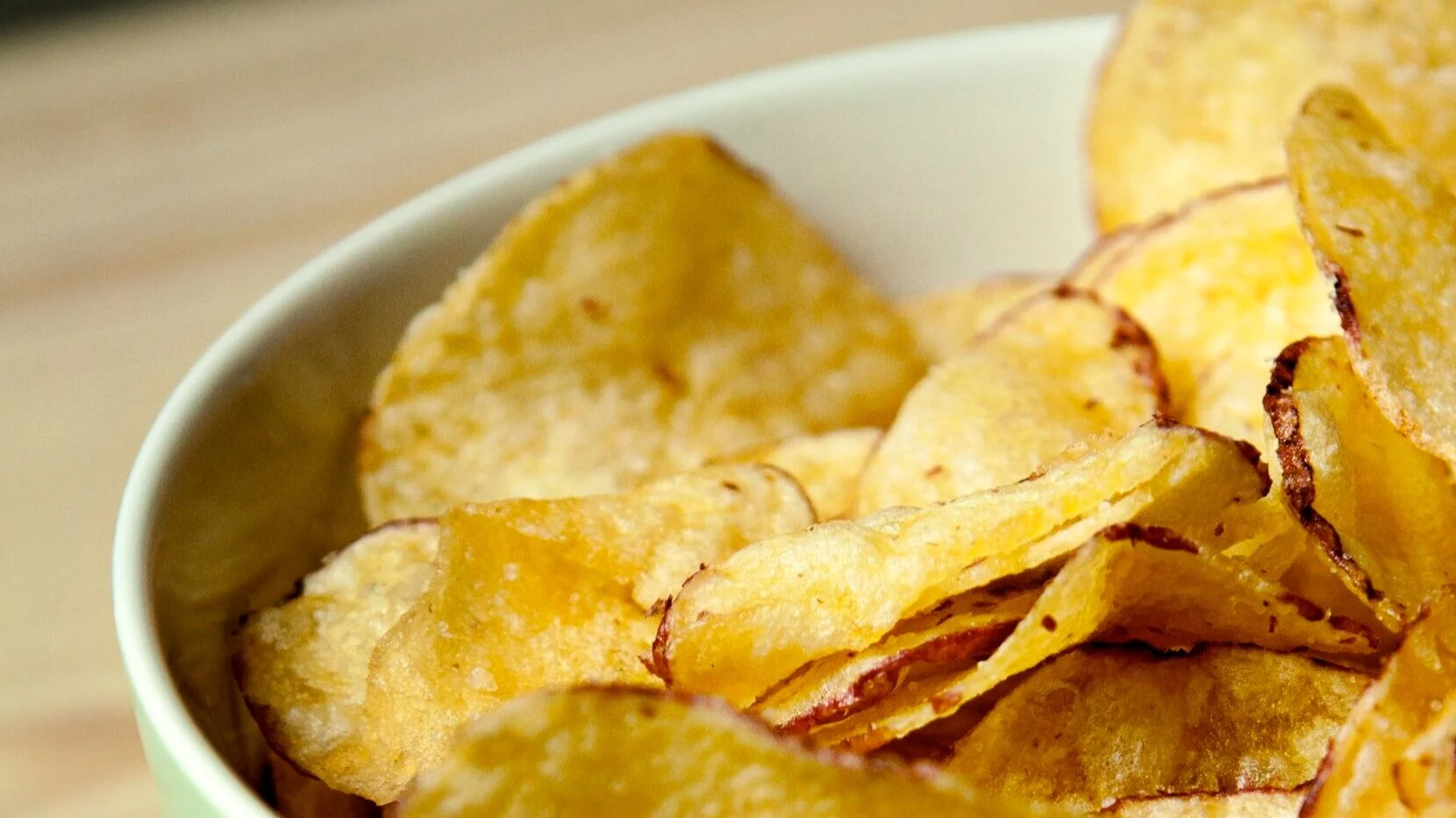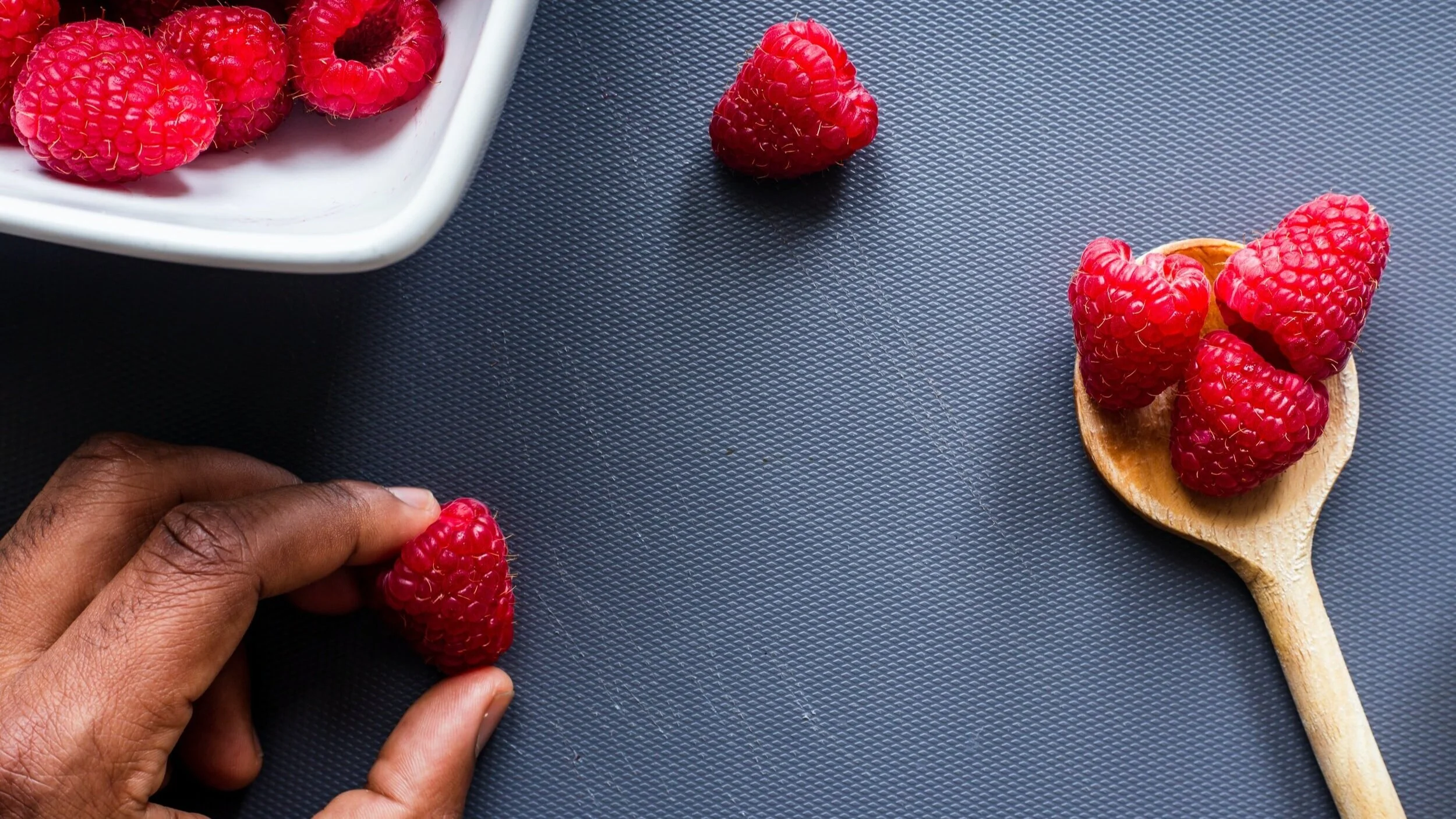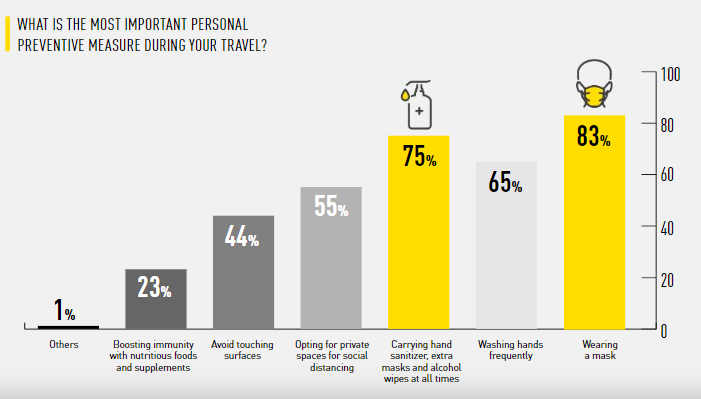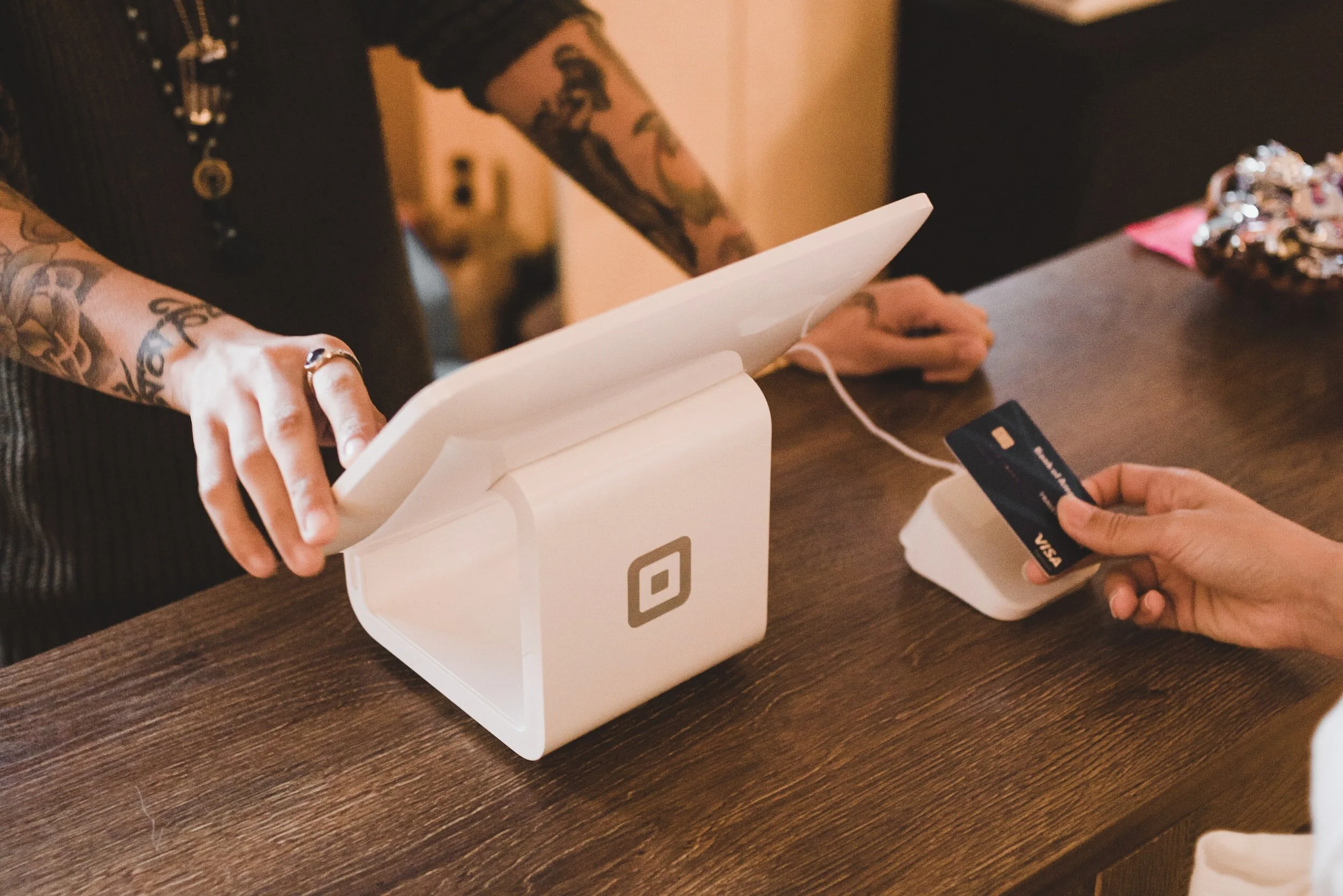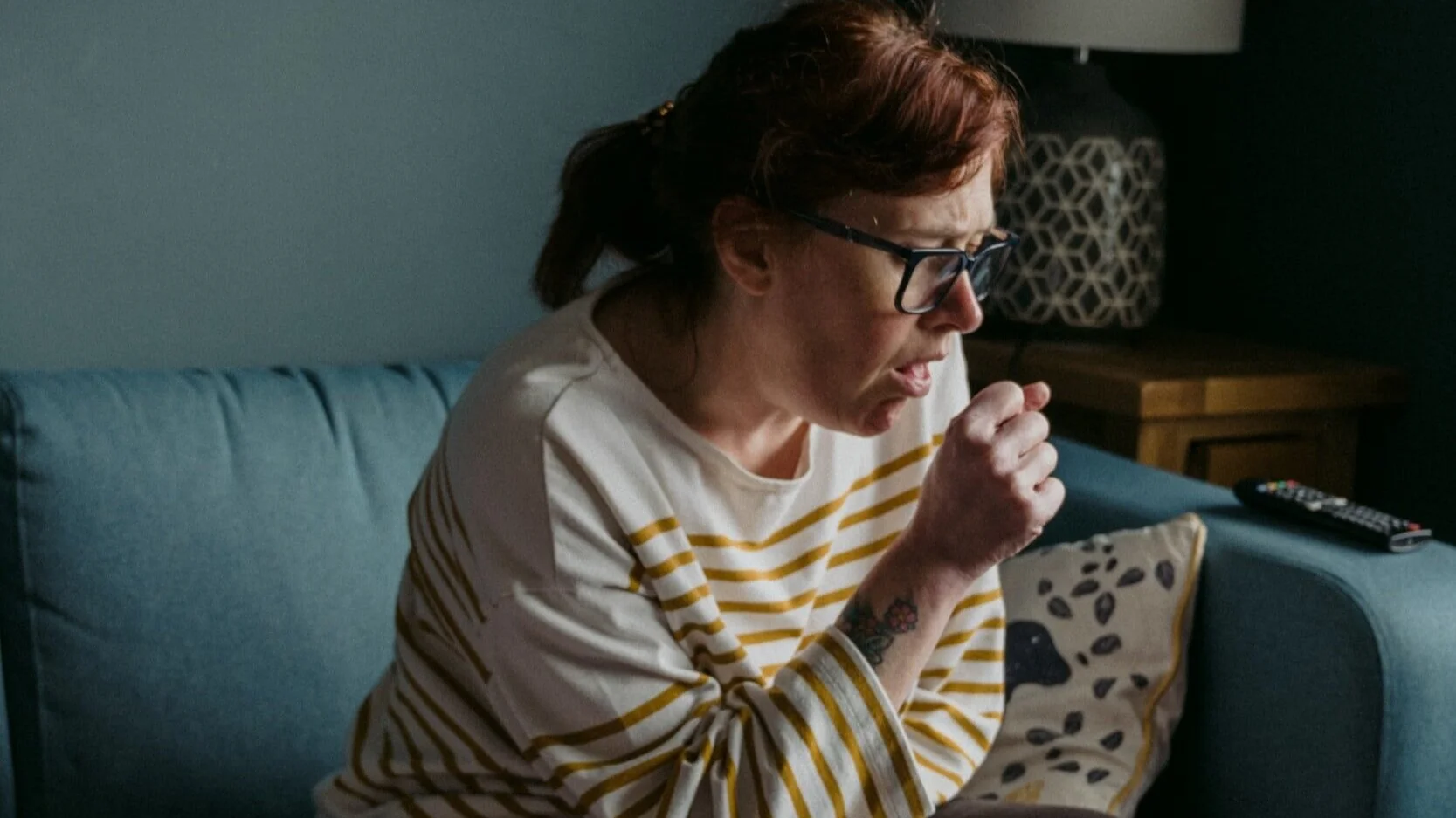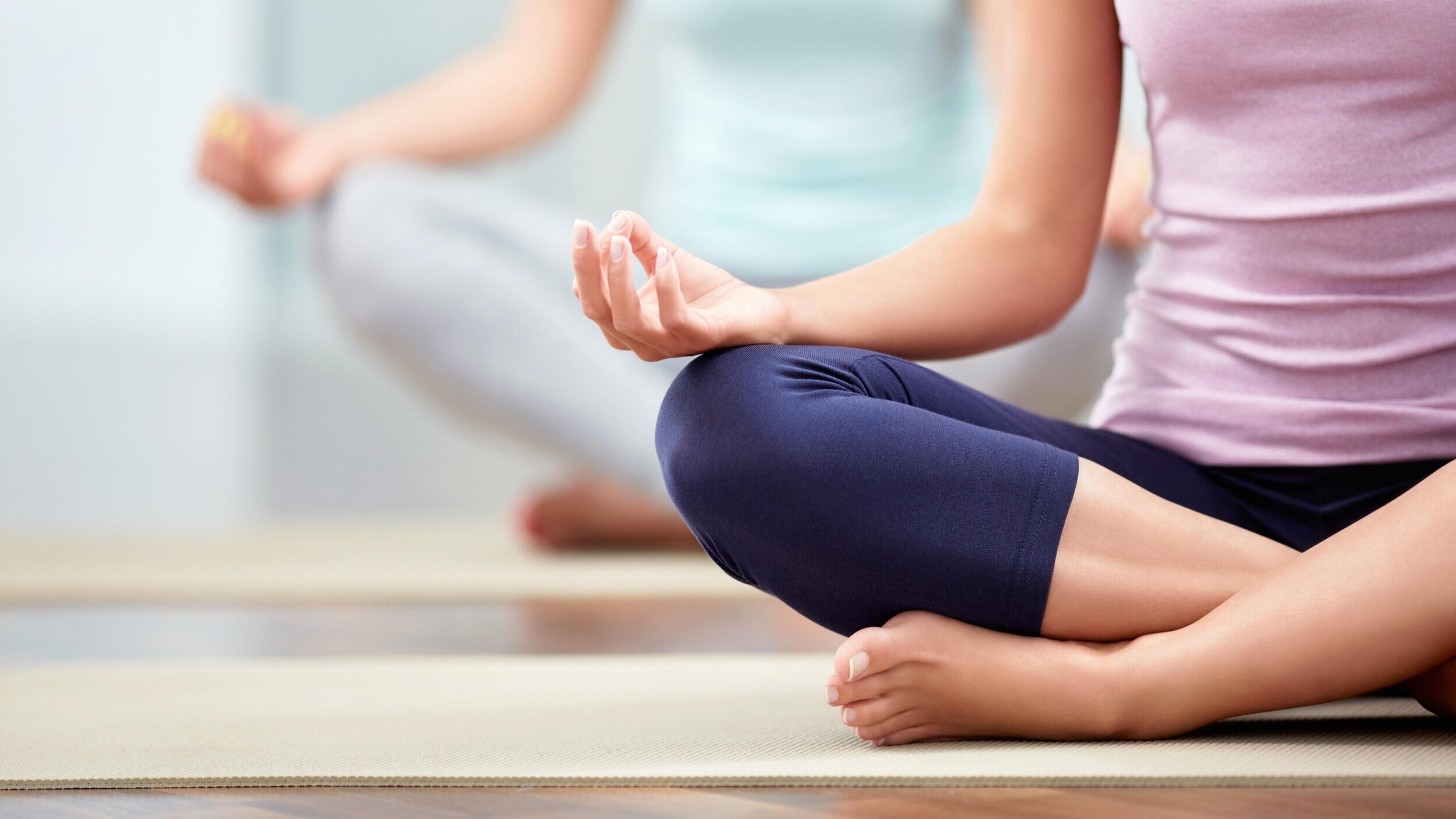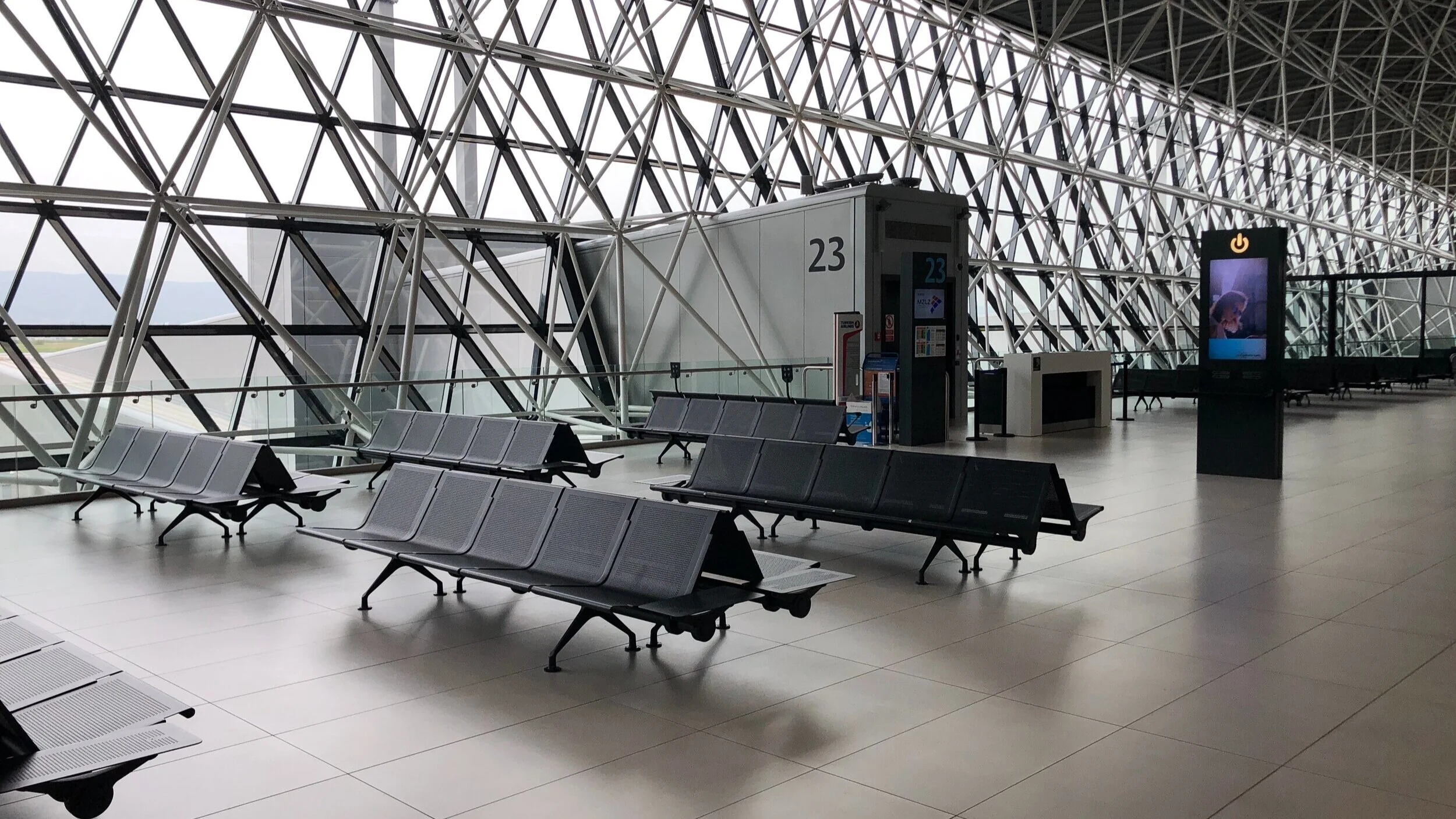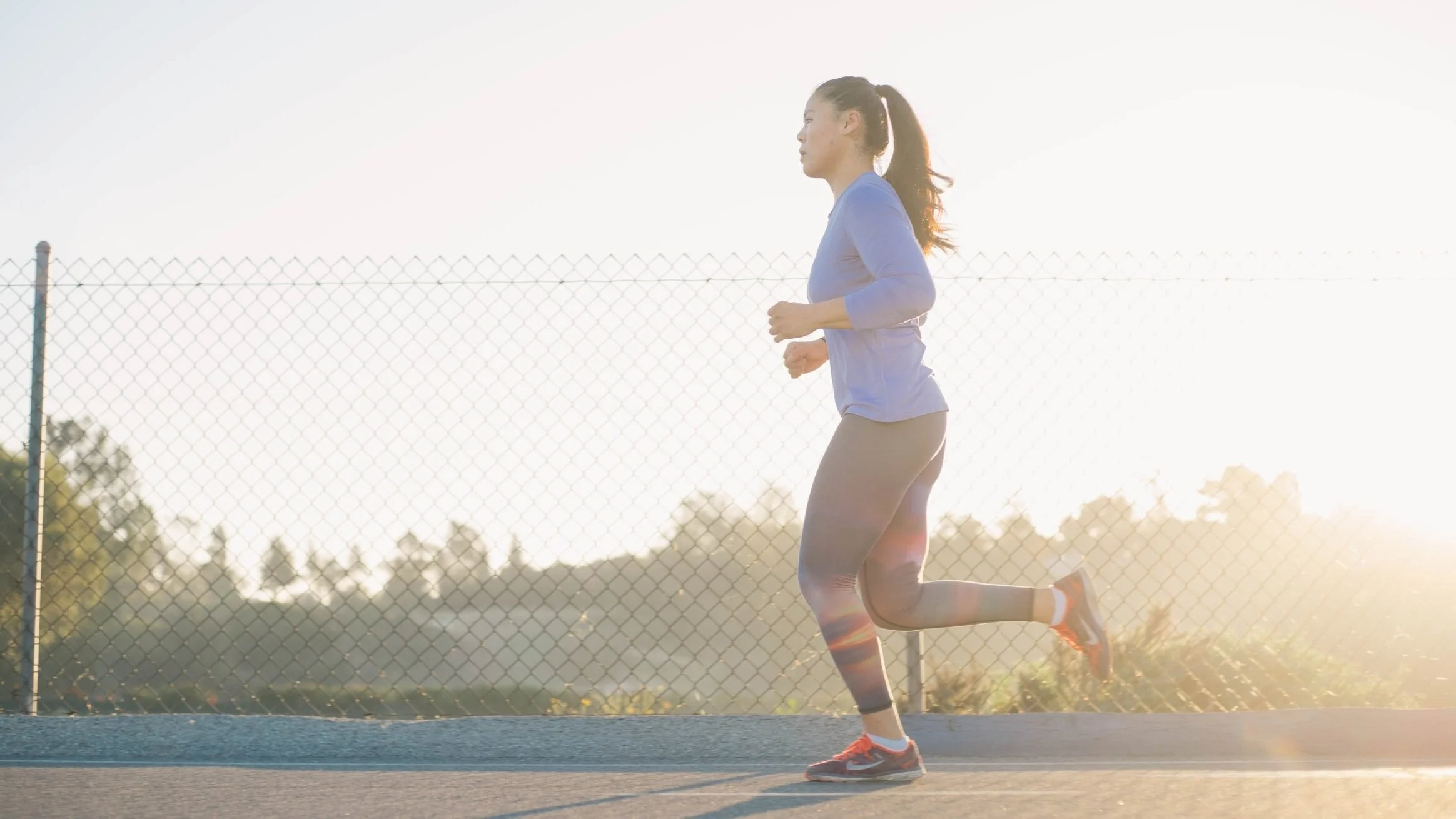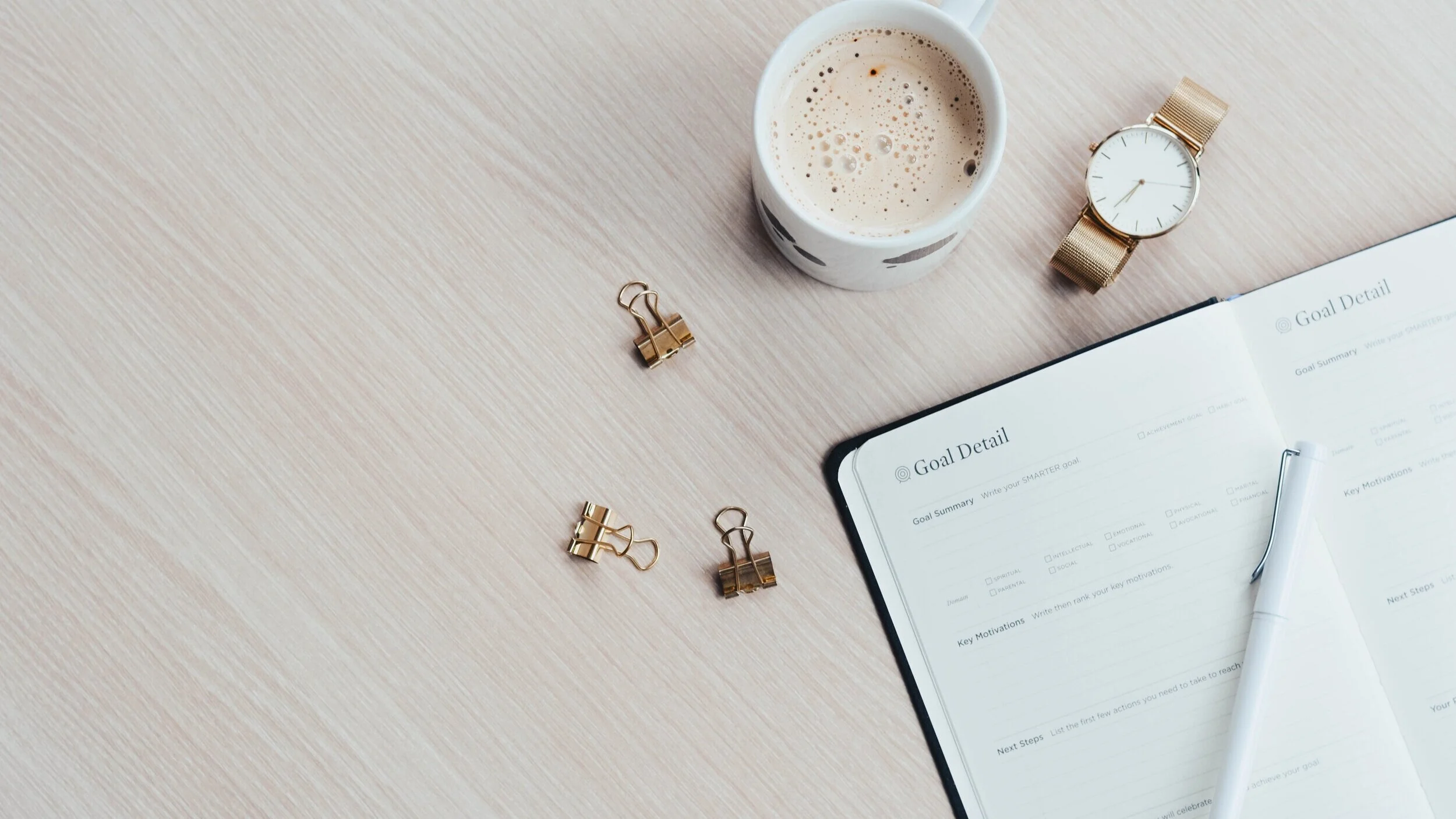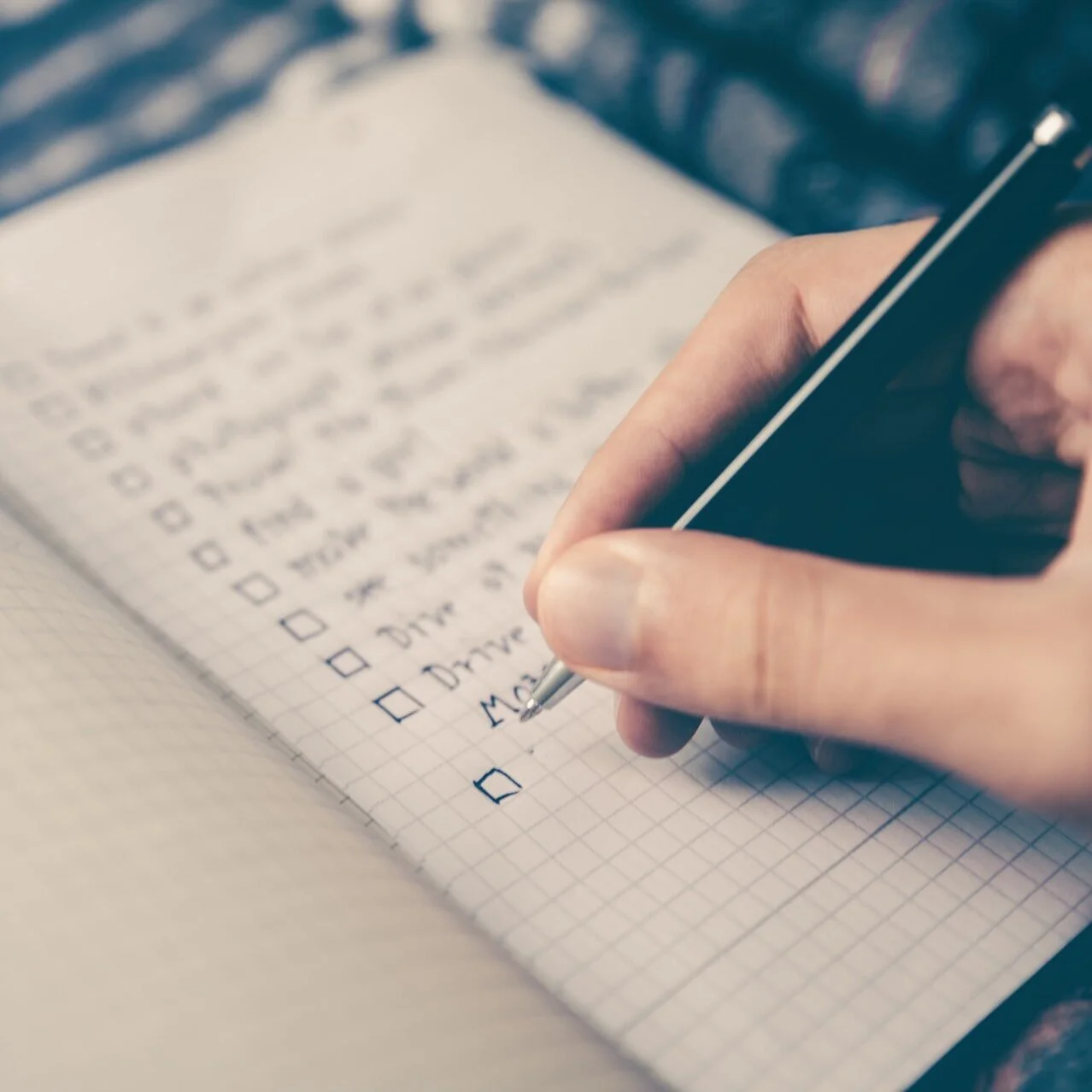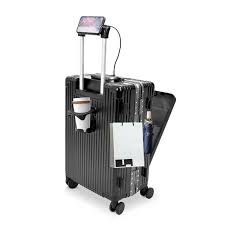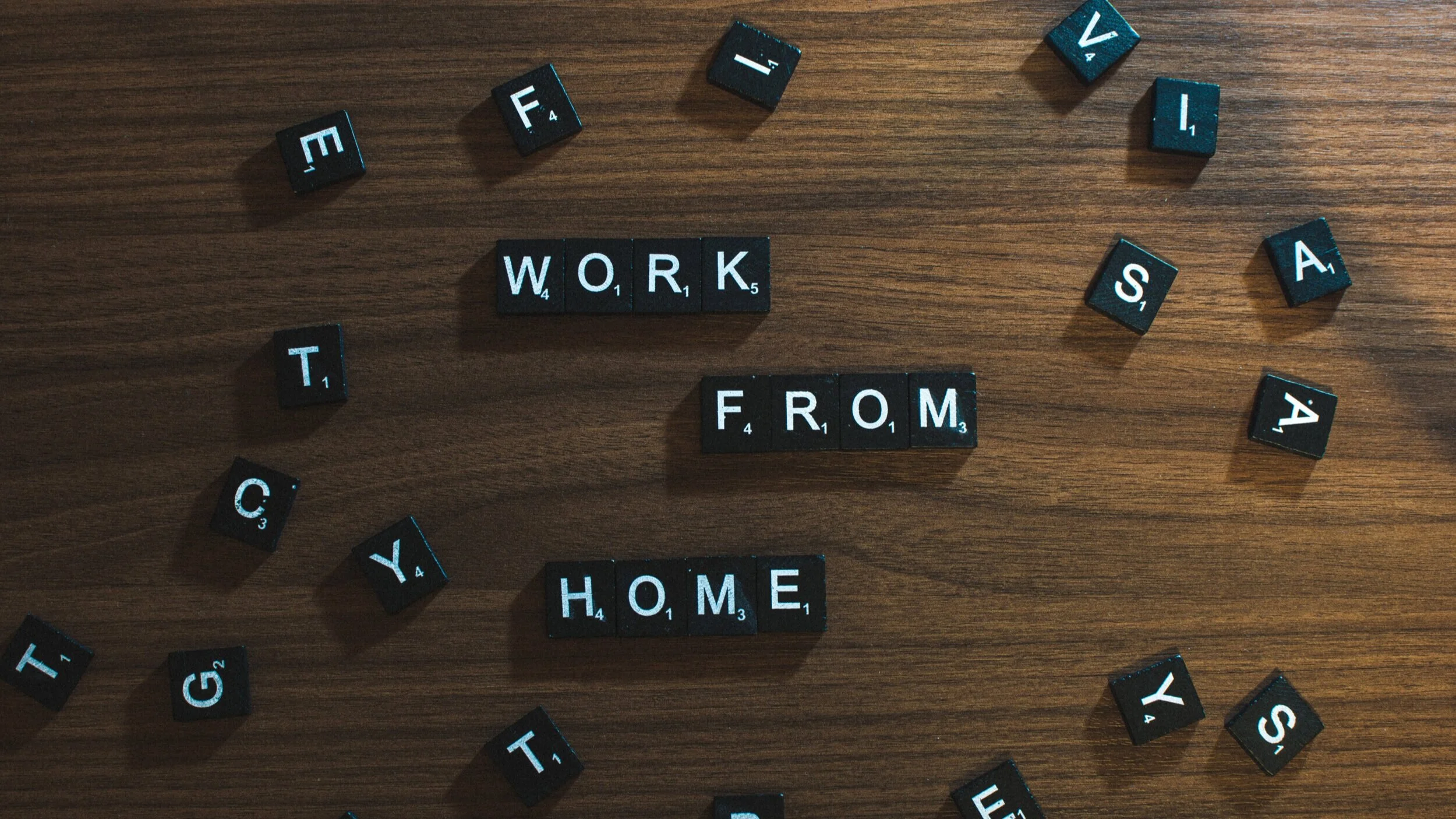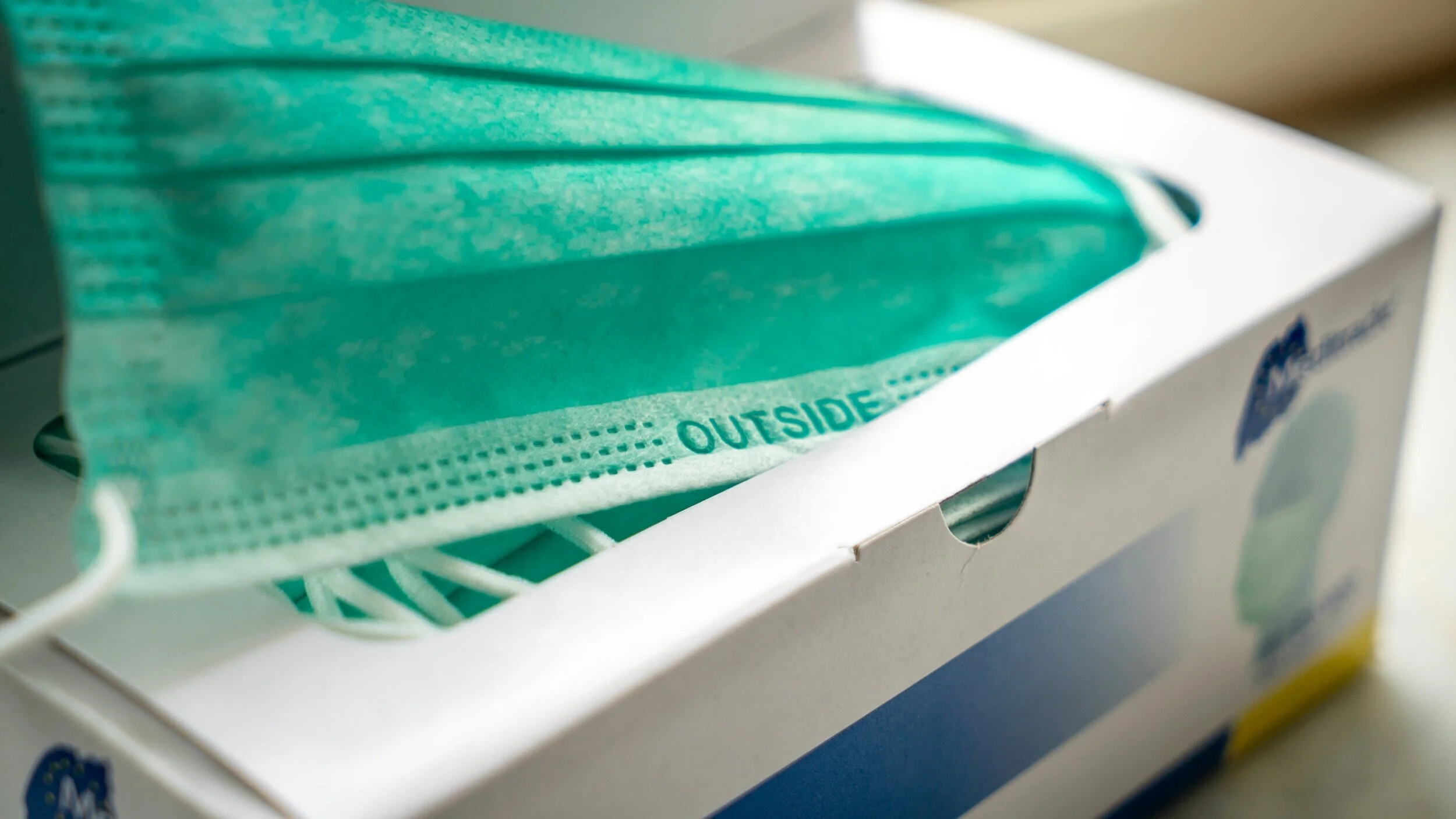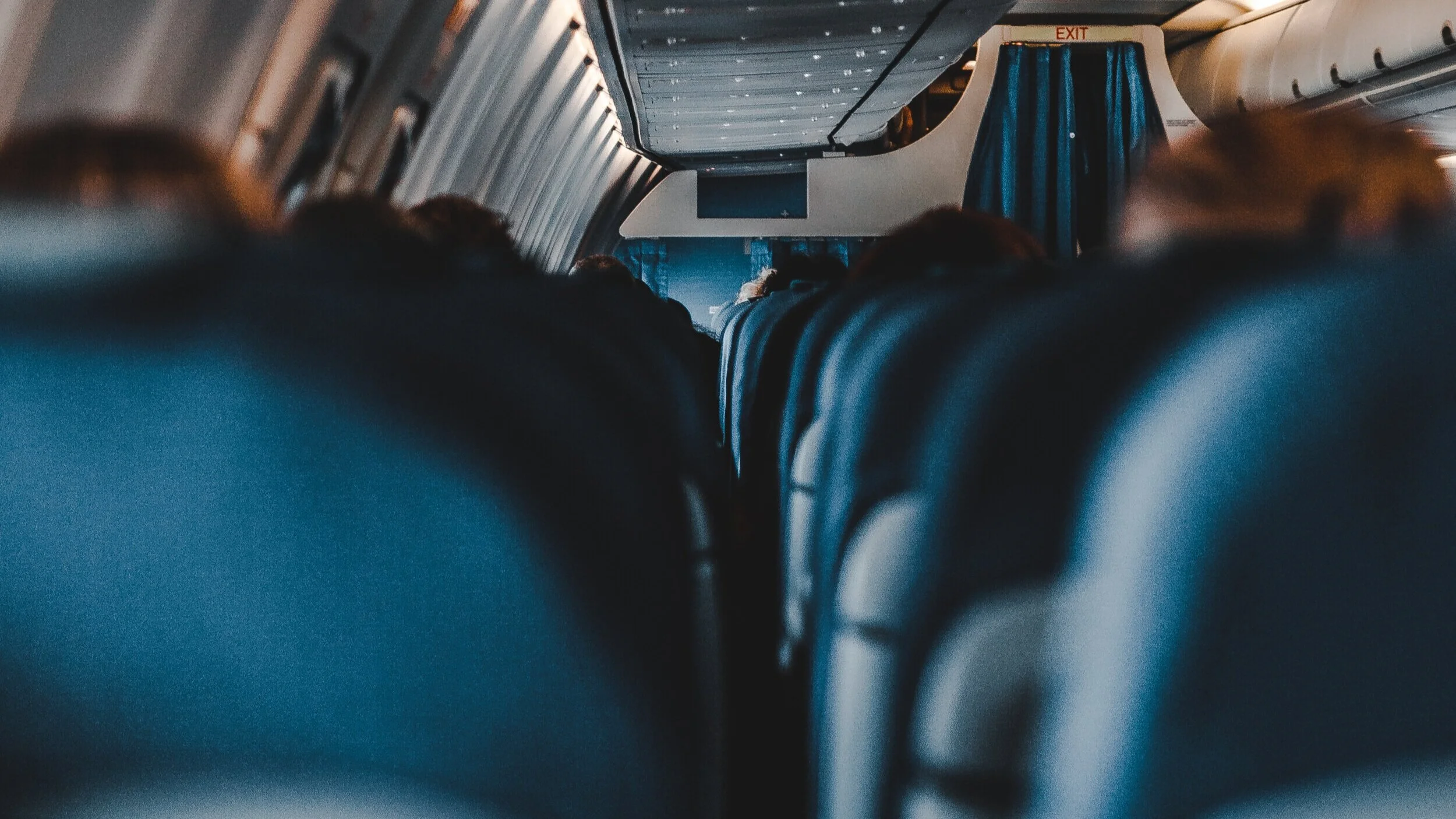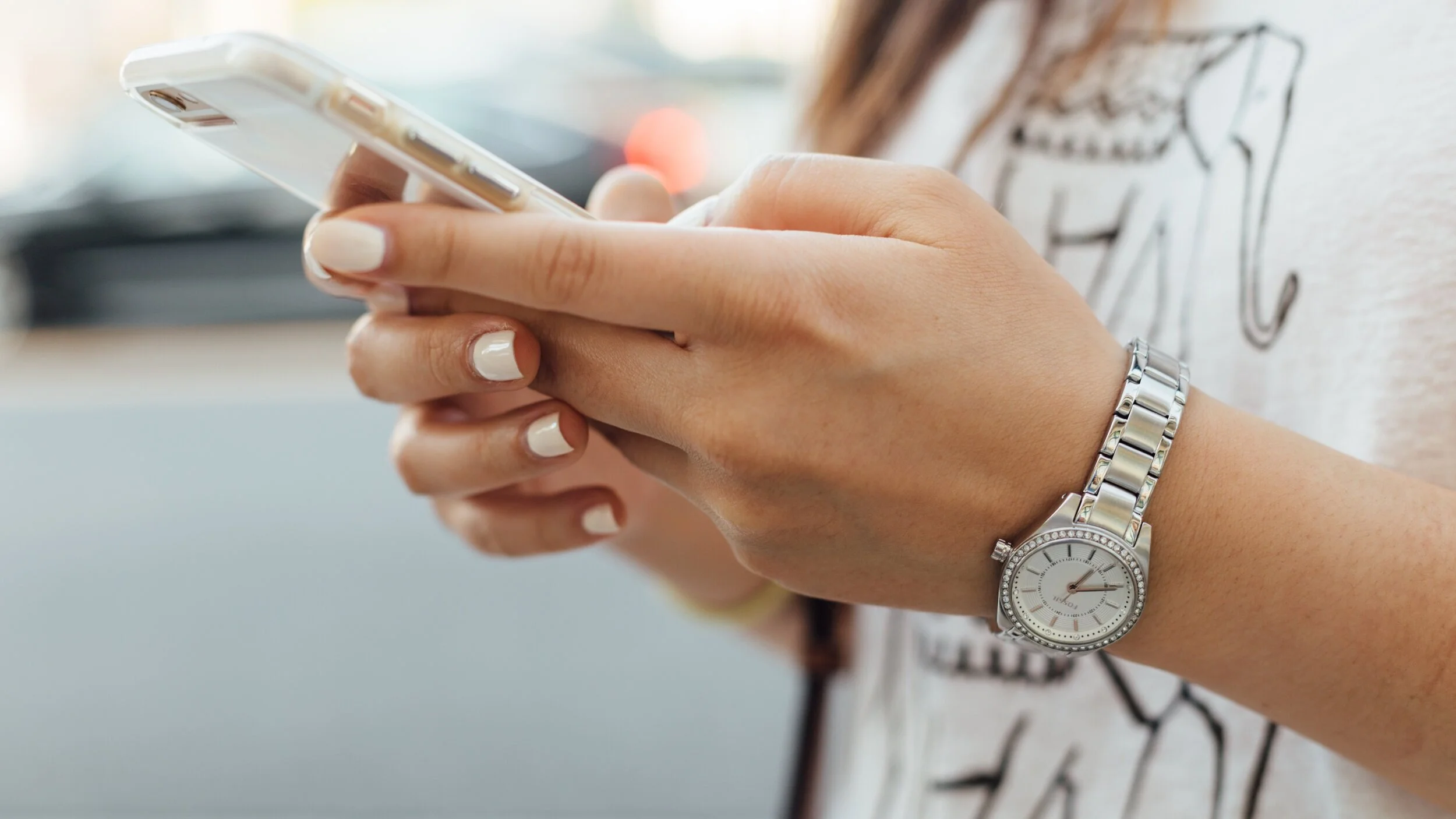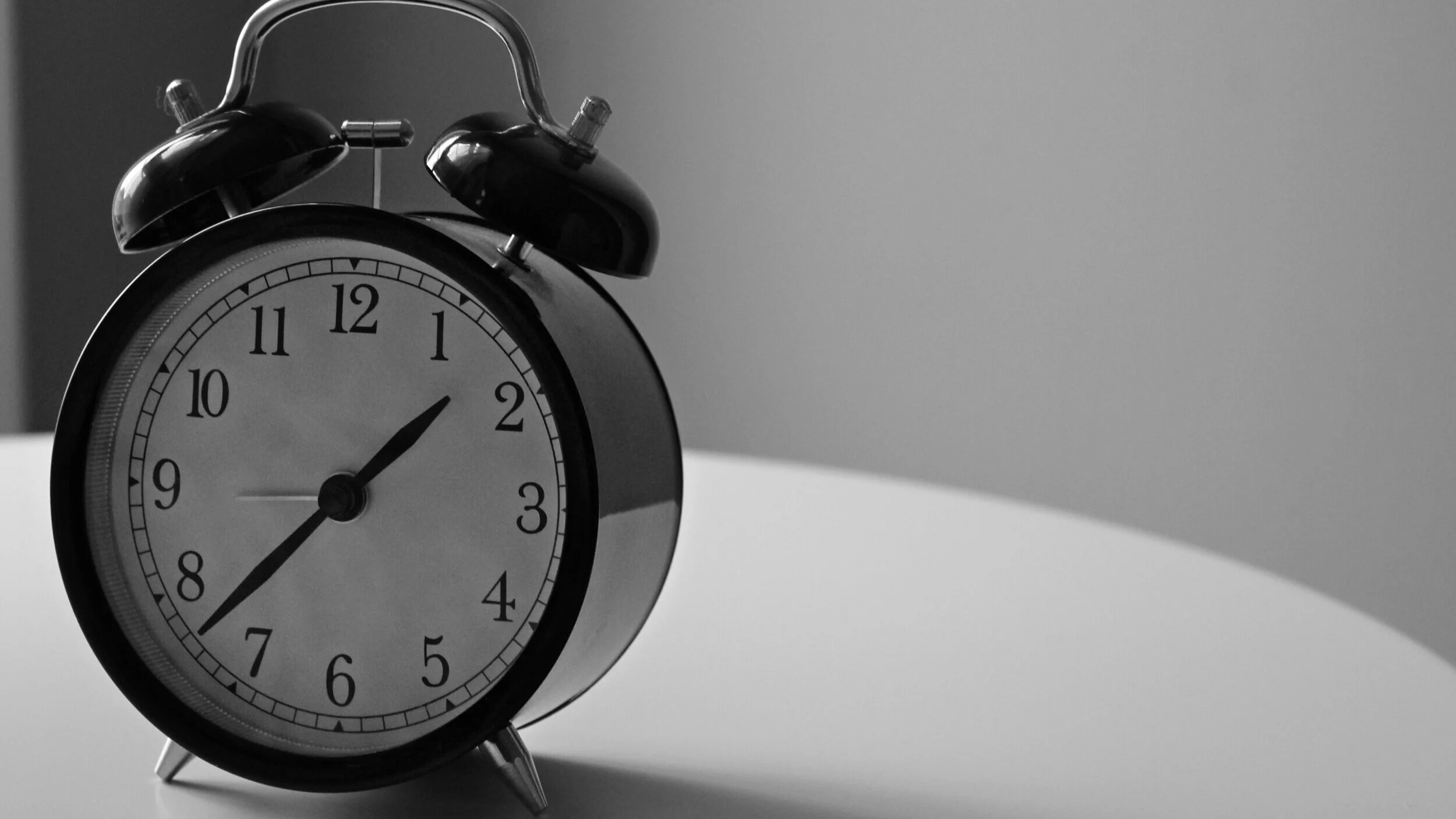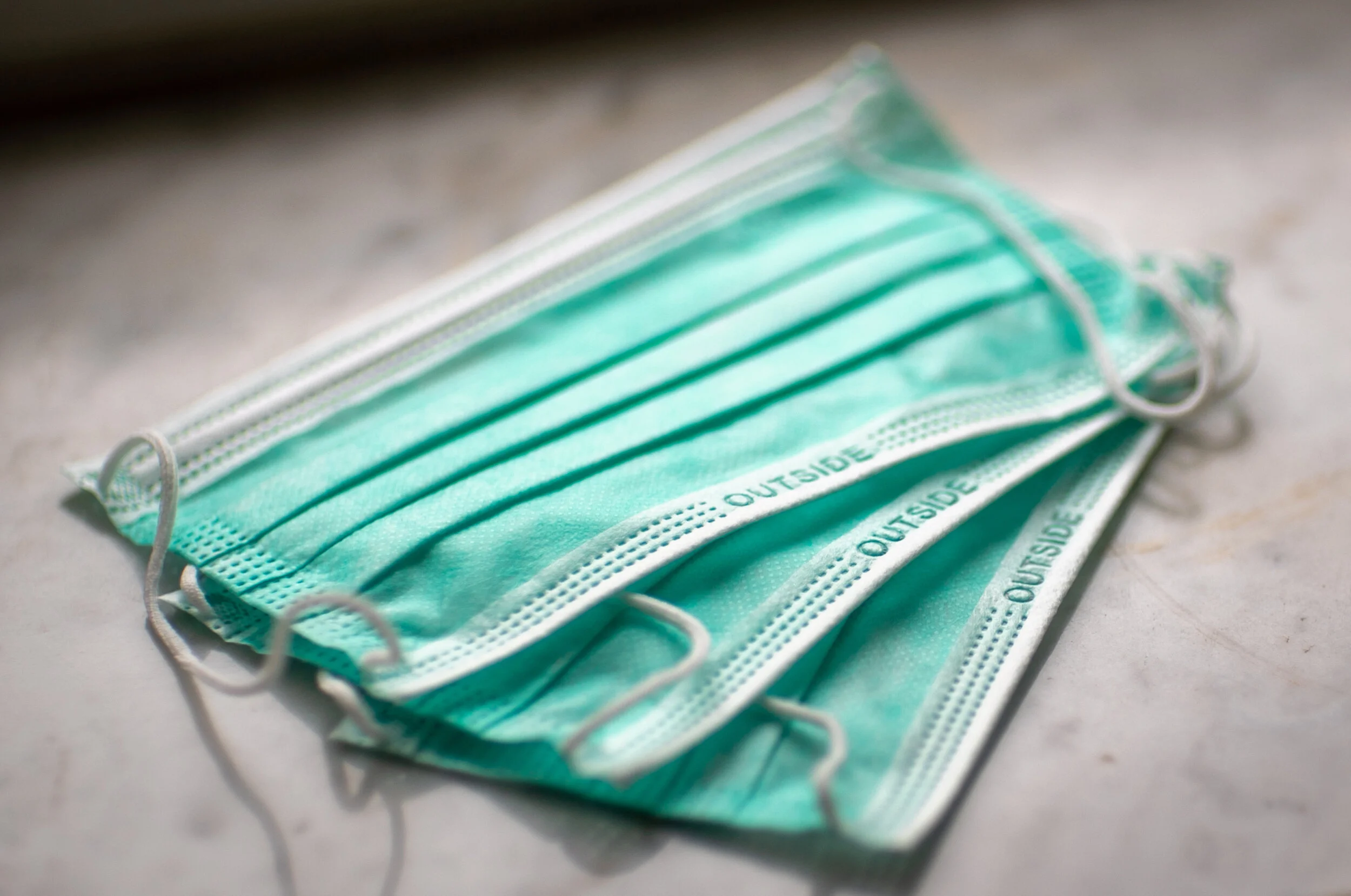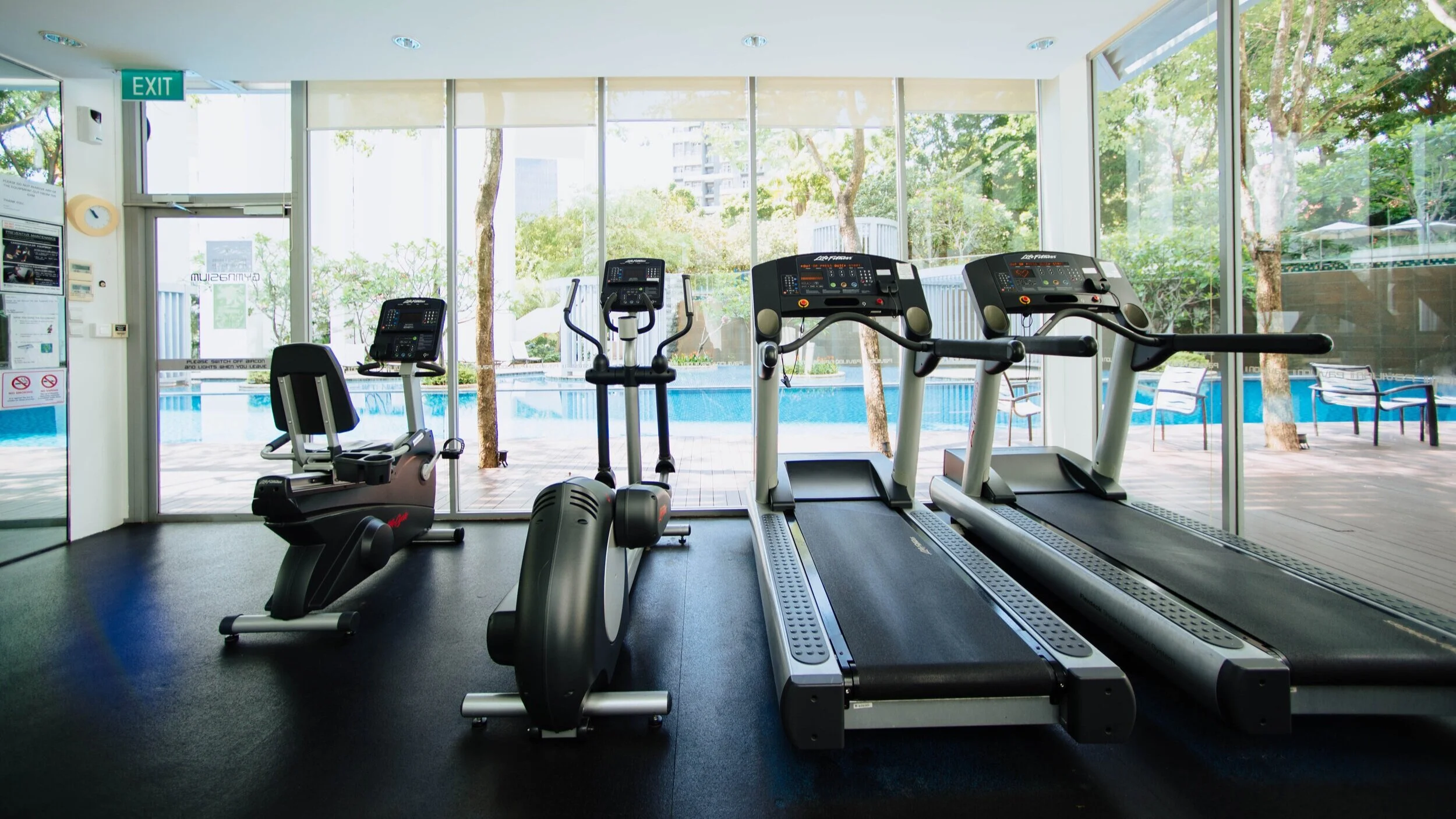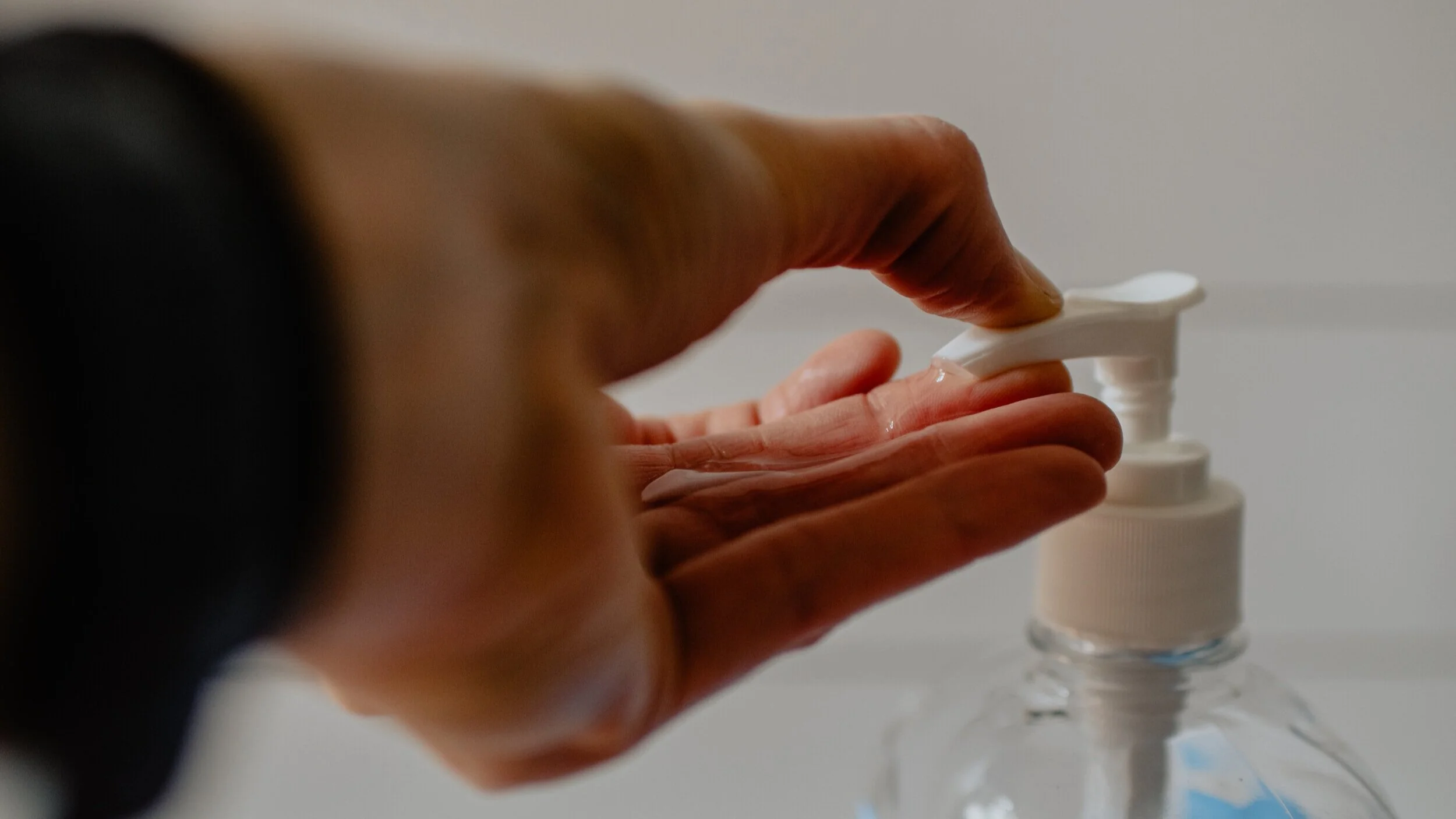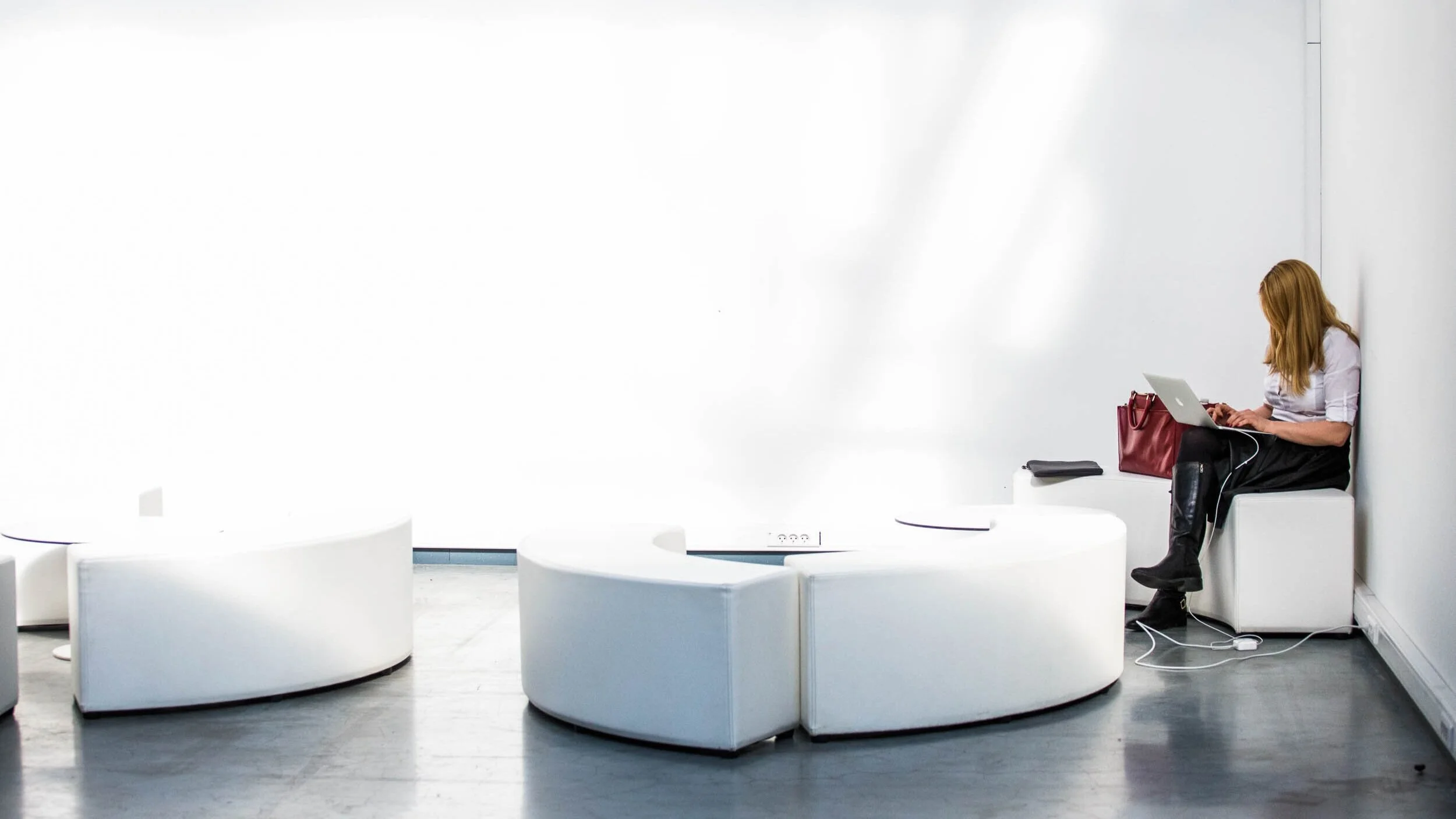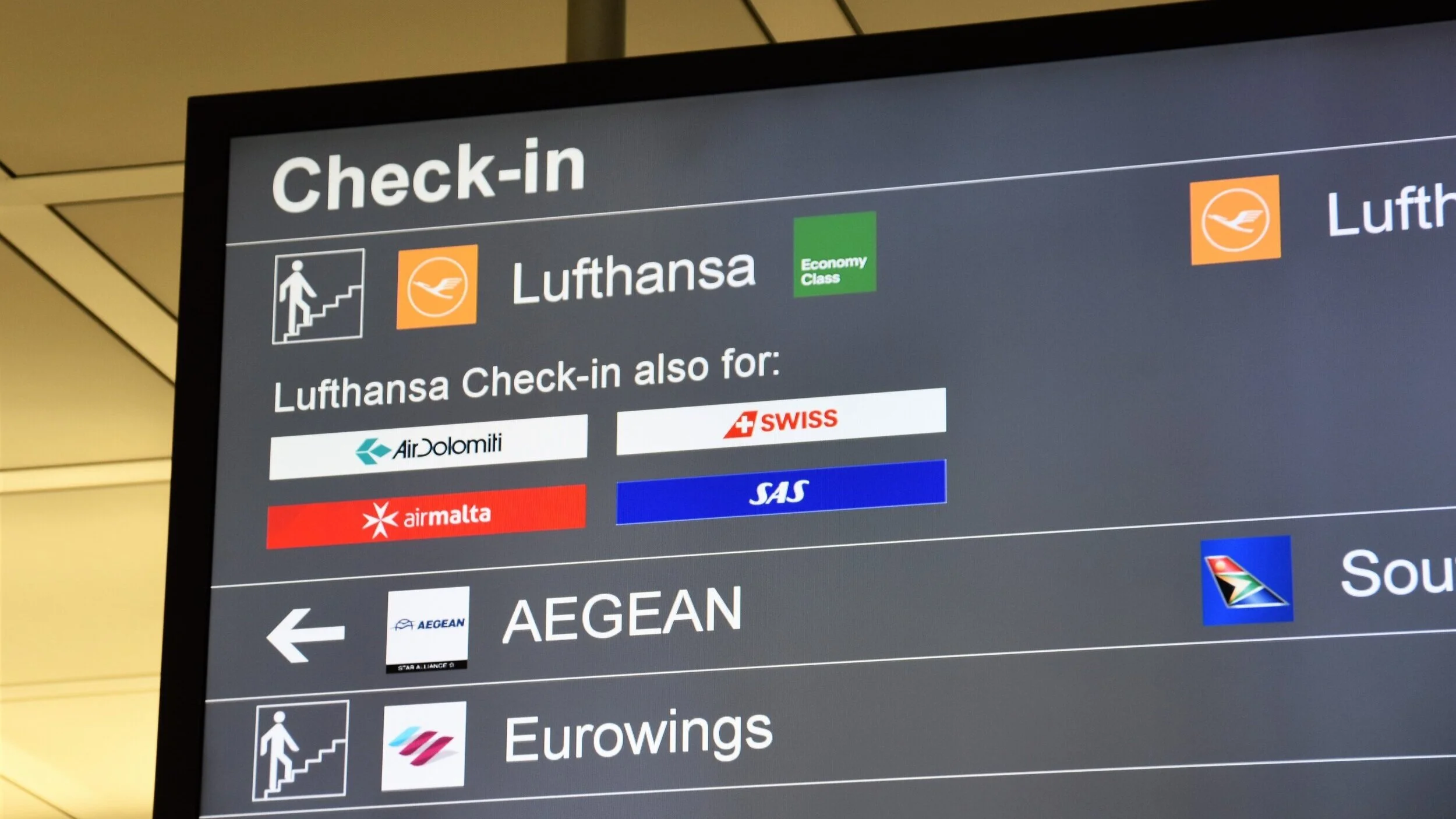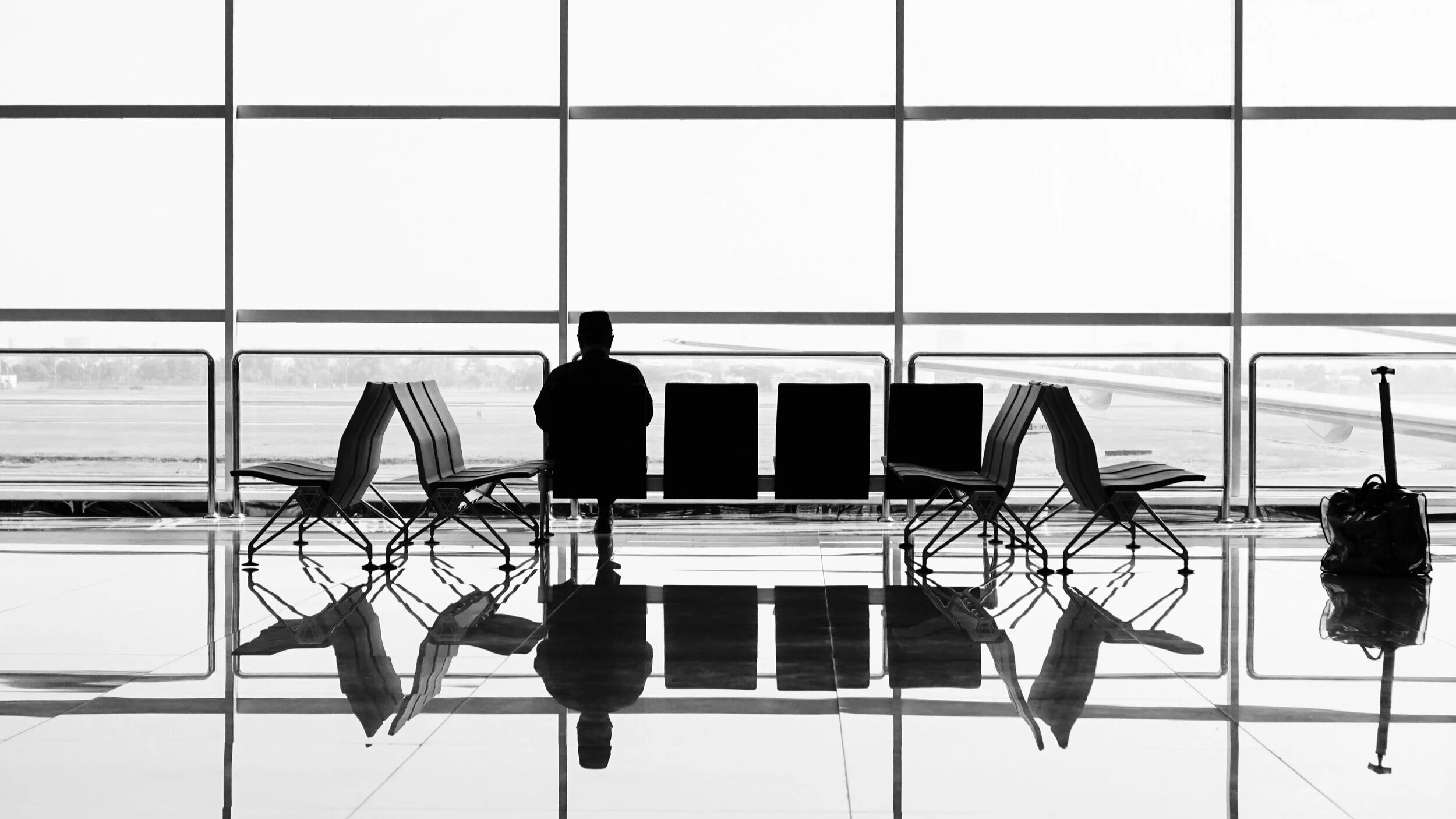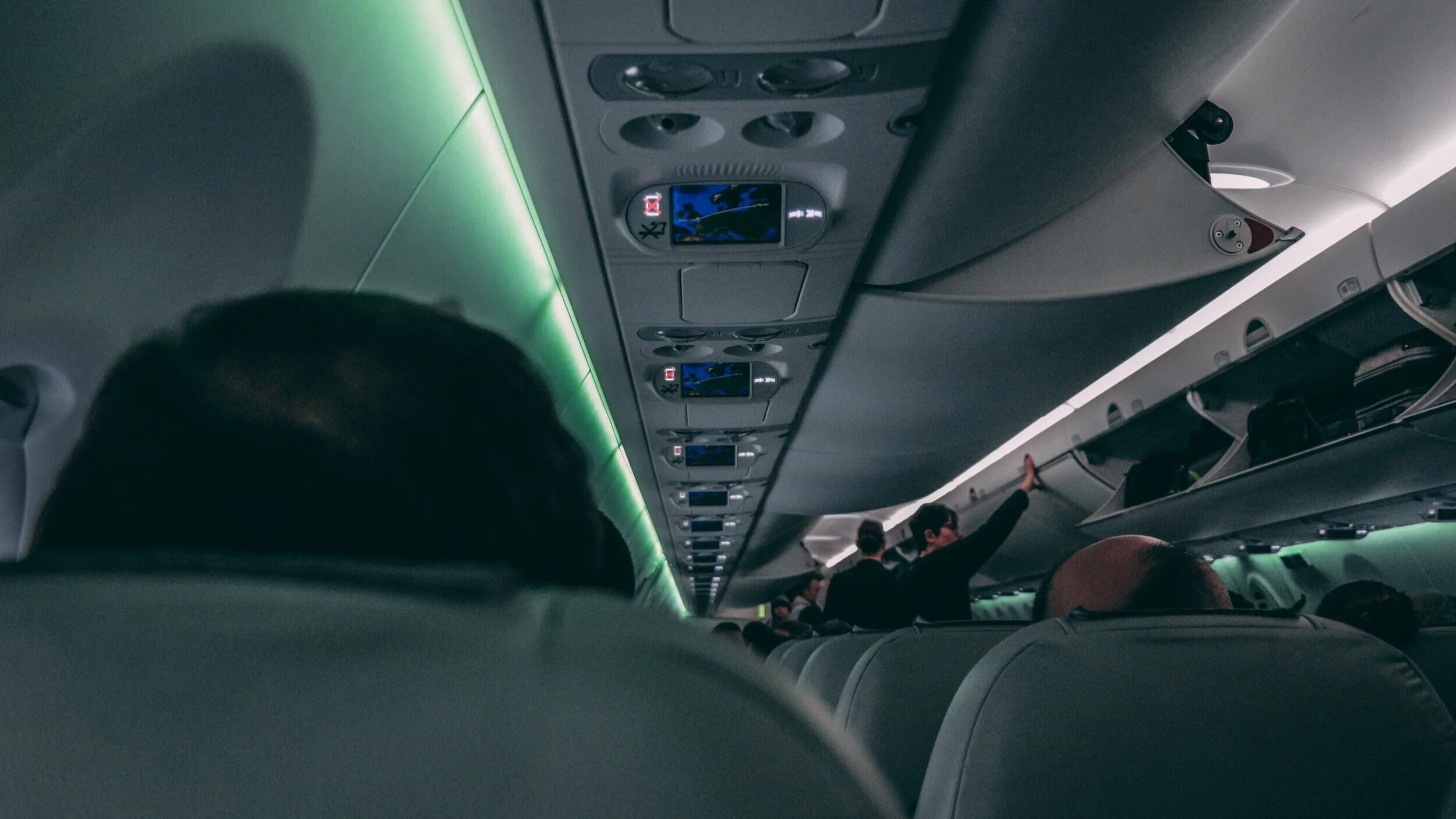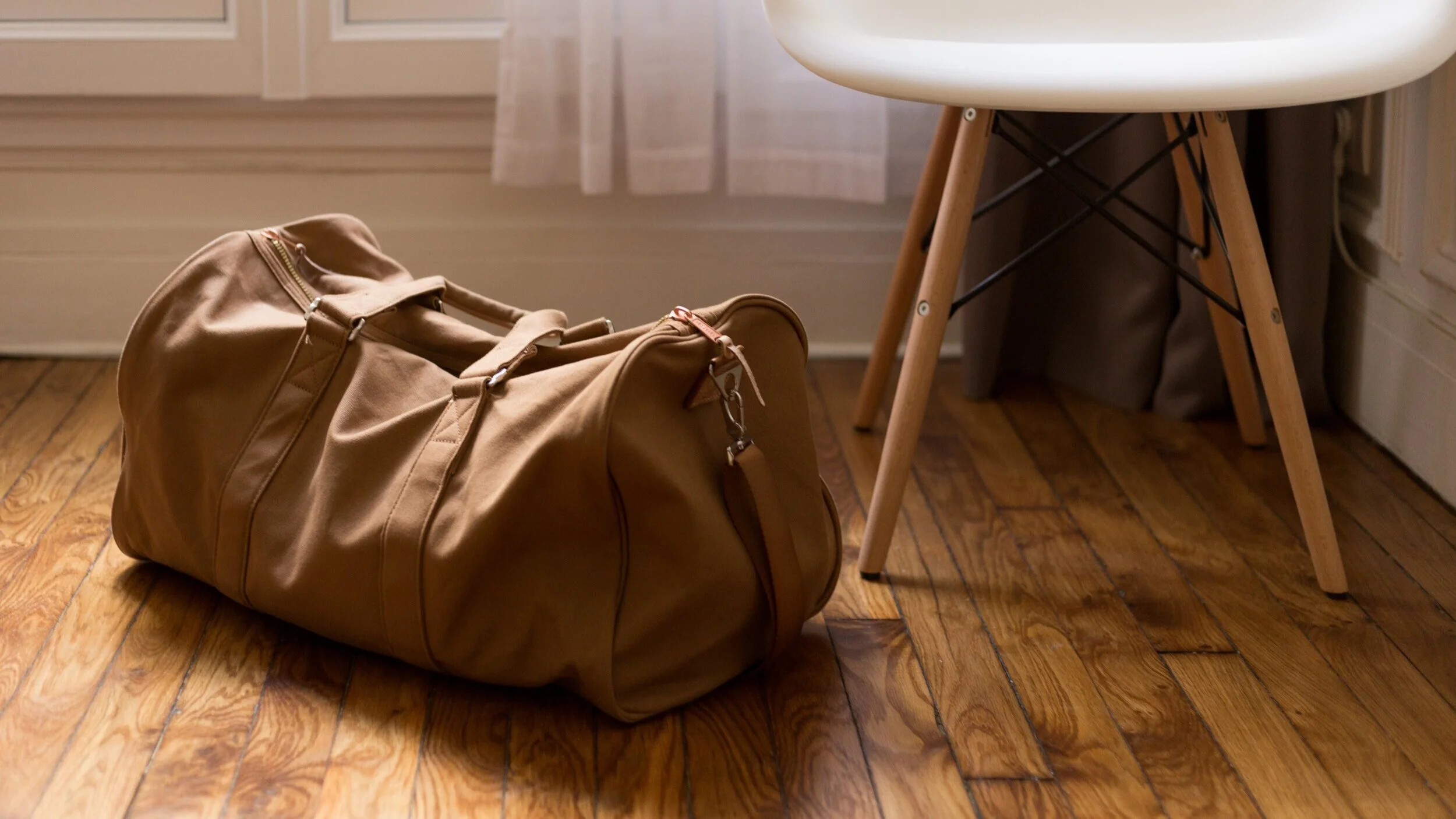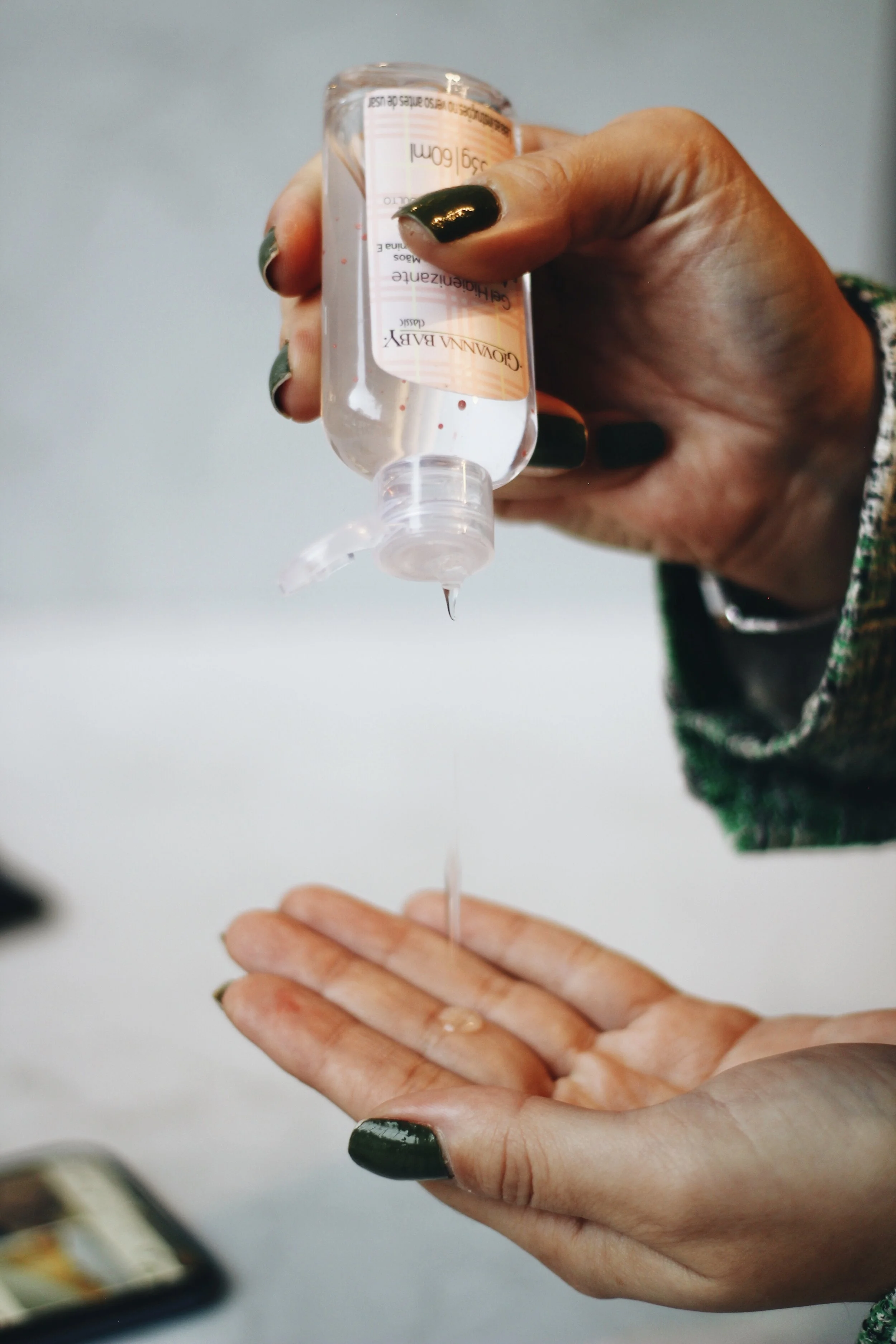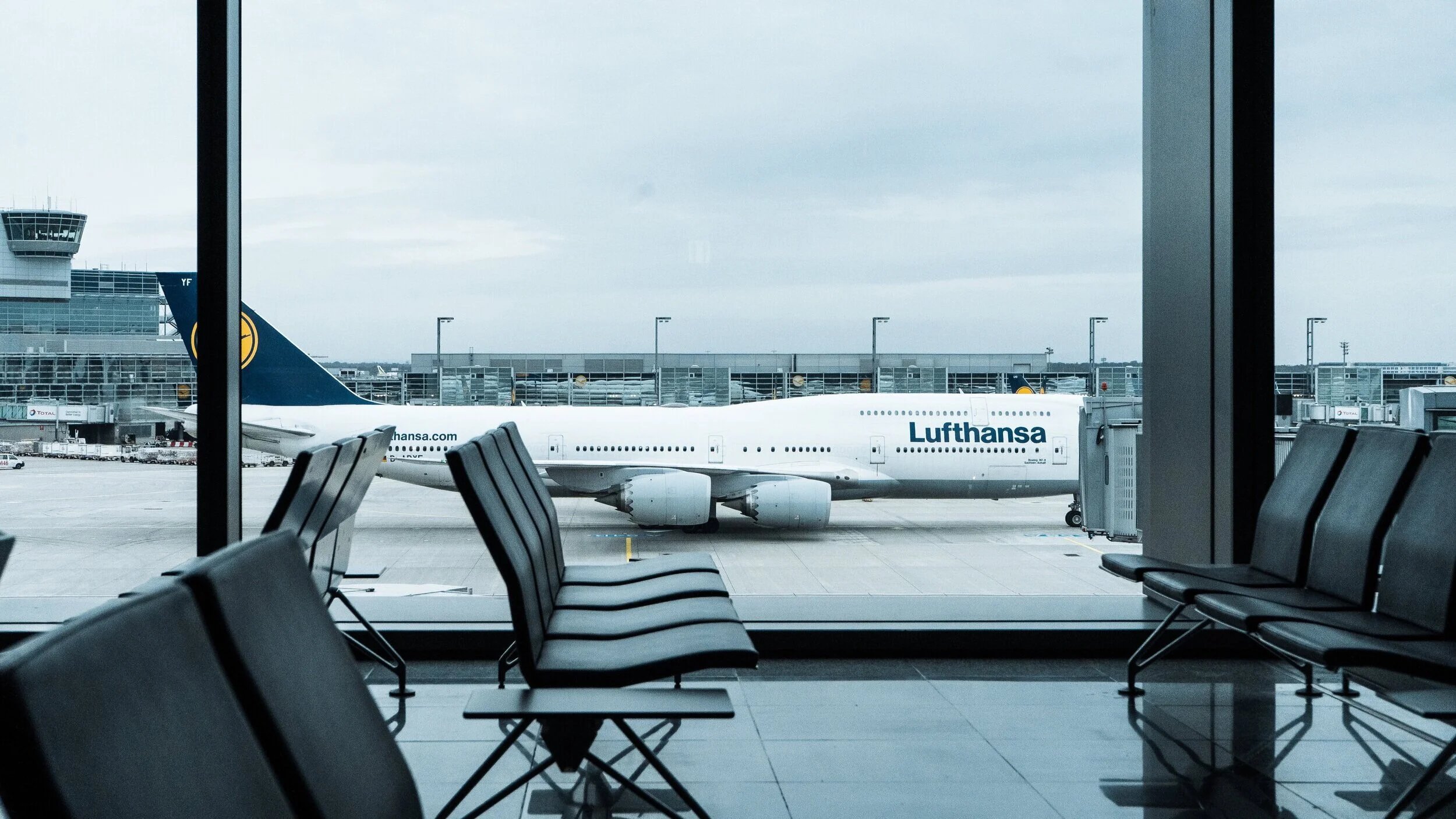What Snacks Will Keep You Feeling Full (In A Good Way!) The Longest?
Eating the right types of food and the right amount of food is incredibly important for maintaining your health and wellness. If you have felt it has been all too easy to overeat and reach for that snack cupboard over the past few months, this is the post for you! Find out what foods you need to eat to make you feel full for the longest.
How to stop overeating
Choose high fibre food so that you feel full for longer
Avoid sugar and processed carbs
Drink water before your eat
Know your triggers and address them
As we hit the restart button on a new year, now is the time to challenge any bad habits we may have let slide over the last few months and make health and wellness a top priority. Eating the right types of food and the right amount of food is incredibly important for maintaining your health and wellness. If you have felt it has been all too easy to overeat and reach for that snack cupboard over the past few months, this is the post for you! We are going to dive into what different types of foods do for you, which ones make you feel full and satisfied and which ones make you feel like eating more. We will provide some helpful tips to reset your mindset when it comes to eating and start building some healthier habits around what goes on your plate. And we will share our favourite healthy and filling snacks that keep up satisfied for longer and stop us from reaching for junk food. Whether you are on the road or staying home you need to be aware of what you are putting in your body and how it is making you feel.
How the pandemic affected our eating habits.
During 2020 we all experienced significant changes to our daily routines and as a result, we have seen a significant increase in weight gain. Forced inactivity due to working from home and lockdowns combined with increased stress levels and increased boredom all contribute to us eating more in terms of quantity and also eating more comfort foods. Often we reach for a snack not because we are hungry but because we are bored or stressed. Eating a poor diet of junk food can cause a drop in energy and mood which makes putting in the effort to squash those bad habits that much harder. Whether on the road or stuck at home it seems like we are battling the same demons when it comes to unhealthy eating. Boredom, lack of choice, stress and for some, lack of time due to added responsibilities all contributed to the development of poor eating habits in 2020. With vaccines being administered all over the world and the end of the Covid-19 pandemic finally in sight, now is the time to address these unhealthy habits and start eating healthy again.
How to stop snacking.
Ok, that’s enough talking about the problem, let's start talking about some solutions. How do we stop reaching for the snack cupboard and overeating?
First, take a long drink of water. Today, the body often confuses thirst with hunger. A good tall glass of water before eating or even deciding on what to eat can help with the quality and quantity decision making.
Next, you need to acknowledge and address your triggers.
You first need to figure out what triggers the desire to get a snack. This will require some inward reflection as for many of us the desire and action have become automatic. We have our heads in the snack cupboard and are pulling out a biscuit before we even realize what we are doing.
Every time you feel yourself going for a snack, ask yourself, why do I want to eat right now? The answer is likely to be one of these three: I am bored, I am stressed out or I am genuinely hungry. If you are bored or stressed you need to work on finding better coping mechanisms for managing those feelings. Perhaps you could start a new hobby or learn some breathing exercises. Check out these articles for tips and advice on how to build healthy habits and how to use mindfulness to achieve your goals.
If you are genuinely hungry, it is likely that you are not eating the right foods. Processed carbs, such as white bread and potato chips cause your blood sugar levels to go up fast which triggers a surge in insulin. The insulin’s job is to clear the sugar from your blood and store the energy. Because the energy has then been stored away, it is no longer available and so your body cries out for more food so that it can create more energy. This is why we often feel a crash in energy after eating these types of foods.
Sugar also has an effect on appetite, although it works in a slightly different way. Sugar triggers your brain’s reward system. After we eat, the area of the brain that drives that need is satisfied and calms down. However, according to research conducted by the Yale University School of Medicine, when we eat sugar that part of the brain remains active and so we still have the urge to eat.
What you are eating has a huge effect on your ability to stop overeating. If your body and mind are telling you that you need more food to feel full and energized, of course, you are going to eat. Choosing the right snacks will help you overcome this trick of the mind and make you feel full and satisfied for longer. The key to feeling full is to choose high-fibre foods. High-fibre foods such as whole grains, vegetables, nuts and seeds take longer to digest and therefore make you feel fuller for longer.
Here are 7 healthy snacks that will keep you full for longer.
Pears
Pears are one of the best fruit sources of fibre. You can expect to get 5.5 grams of fibre in a medium-sized pear.
Bananas
Bananas are rich in many minerals and vitamins and though not as high in fibre as pears, you can expect about 3.1 grams of fibre per medium-sized banana, they are a greatly satisfying and healthy snack.
Raspberries
Raspberries are the best fruit option when it comes to fibre intake. You can get 8 grams o fibre from just 1 cup! Raspberries are also a great snack for traveling because they produce zero waste.
Carrots
While vegetables tend to be a great source of fibre, they do not tend to be great for snacks. I am not sure about you, but the thought of biting down on a raw head of broccoli is not very appealing. Carrots are a good option for snacking as they are not only relatively high in fibre (approx. 2 grams per medium-sized carrot) but they are also full of natural sugars that can satiate your sweet tooth.
Popcorn
If fruit and veg are not your idea of a good snack, popcorn could be the best option for you. You can expect to get 13 grams of fibre per 100 grams of popcorn. Make sure to opt for air-popped popcorn so as not to introduce too much fat into your diet.
Almonds (or other nuts)
Nuts are a great source of both fibre and protein. A handful of nuts will make you feel fuller for much longer than a cookie will. You can expect to get 3.5 grams of fibre from a handful of almonds.
Dark Chocolate
Dark chocolate is surprisingly nutritious and can be very beneficial for your health. Make sure to opt for chocolate that has a high cocoa content so as to get the full benefits. You can expect to get 11 grams of fibre from a 100-gram bar of dark chocolate with 70-85% cocoa content.
At Sanctifly we are here to support travelers build healthy and lasting habits. Even though we are not flying right now, maintaining healthy routines is still important. Although most of the content on the Sanctifly app was designed for traveling, it is applicable and helpful in all walks of life. Building good habits around eating both at home and on the road is one of the main pillars of support we offer our members. Find nutritional facts, healthy meal plans and more in the Sanctifly app today and start your journey to better health and wellness.
Download the app today to explore our content and start building your healthy habits at home with Sanctifly.
For more information on our membership types, click here.
How To Use Mindfulness To Break Bad Habits
The new year is all about building new healthy routines and breaking old, bad habits. Mindfulness is an effective tool that we can all use to build our healthy routines. Find out why mindfulness is so useful for building healthy habits and tips and advice for using it in your daily routine.
The new year is all about building new healthy routines and breaking old, bad habits. With the increased focus on our health and wellness in 2020 and a return to frequent travel on the horizon, many frequent travelers have been forced to reassess their usual travel habits and ask honestly, do I look after my heath while on the road? For many people going to the airport and getting on a plane is a once or twice a year event. We are going on holiday and it is exciting and many of the rules we apply to our everyday lives, such as eating healthy, getting 8 hours of sleep and only having one glass of wine with dinner are ignored as we let loose and enjoy ourselves. Engaging in this type of behaviour once or twice a year is not going to be hugely damaging to your health. However, for those that travel frequently, heading to the airport is more of a routine and can happen multiple times a month. Why then, do frequent travelers still entertain bad habits while on the road? Why would the usual healthy eater eat a greasy burger just because they are at the airport? Or why is having a drink an acceptable way to spend a spare hour? Frequent travel is notorious for building bad habits. Because the experience is often stressful and boring, we let our usual rules slide and take on a ‘it doesn’t matter, let’s just get through this’ type of mentality. And with the next trip to the airport often only a few days away, it was difficult to find the time to interrogate our habits and routines and put effort into changing them. 2020 has given frequent travelers a unique opportunity to reflect on their past experiences and make more conscious decisions to work toward a healthier travel routine. But realising the need for improvement and making the decision to change is only half the battle. Breaking old habits is not easy, however with the right tools and support it will get easier. We would like to introduce you to an incredibly useful tool that will help you in your journey, and that is mindfulness.
What is mindfulness?
It is likely that you have heard the term mindfulness before. Meditation and mindfulness have been popular in the wellness space for a long time. We asked Silvia Vizzoni, founder of Trip Unwind to explain what mindfulness is. She says…
‘Mindfulness is all about training the mind to become more aware of what is happening, as it is happening. It cultivates awareness of your thoughts, emotions and body in the present moment without judging, teaches skills to become less reactive to outside unpleasant experiences, and helps to develop self-awareness and to nurture growth, emotional intelligence, creativity and innovation.’
How can mindfulness help break bad habits?
Practicing mindfulness can greatly improve our ability to break bad habits. Habits are automatic and routine. We do them almost without thinking and this is often why they are so hard to break. Because we do not consciously intend to do the action, figuring out how to stop ourselves doing it can be tricky. Mindfulness helps to focus our attention on the present moment and acknowledge and create intent around the actions and thoughts that we often do automatically. We develop self-awareness as we become more mindful and this allows us to more easily identify and act on bad habits as we are engaging in them. If we commit to actively stopping the bad habit as well as acknowledging it, those bad habits will eventually be broken.
Another key aspect to mindfulness is the lack of judgement. This element can be the hardest part to wrap our heads around, especially when using mindfulness to address bad habits. Judgement is an automatic response if we find ourselves doing something that we consider a bad habit. And, because we don’t want to spend our free time being judgemental and feeling bad about ourselves, we inevitably stop thinking about what we are doing, and the bad habit continues. Mindfulness teaches acknowledgment without judgement. This is often one of the biggest stumbling blocks when it comes to mindfulness and requires effort and practice to get right, and needs to be mastered in order to effectively use mindfulness to break bad habits. Unfortunately, there are no quick fixes when it comes to breaking bad habits, however, once you have mastered the technique, it will become much easier.
How to use mindfulness to break bad habits.
Here are some steps to follow on how to use mindfulness to break bad habits on your next trip.
1. Awareness: First you need to understand what your bad habits are and when you engage with them. Make a note of every time you engage in a bad habit, what triggered it and how you felt directly before and directly after. For example, if you are bored while waiting for your flight do you automatically head for the bar?
2. Mindful Pause: Once you have a clear understanding of your bad habits and triggers, the next step is to introduce a mindful pause before engaging in it. When you come across a trigger for a bad habit, take a moment to stop, take 5 deep breaths and then ask yourself, ‘do I really want to do this?’ If the answer is yes, then go for it without judgement.
The idea behind this stage in the process is not to force yourself not to engage in the bad habit but to create a separation between the trigger and the reward (engaging in the habit). The mind follows an expected pattern, trigger, behaviour and then reward. By introducing a moment of self-awareness and acknowledgment after the trigger, it breaks the automated response and makes the action more intentional. And it is much easier to stop ourselves doing intentional actions rather that automated ones.
3. Identify Alternatives: Ok, now you understand your bad habits, your triggers and have introduced a mindful pause. Next you need to identify alternative activities for when you encounter your triggers.
First, separate your triggers into two categories, avoidable and unavoidable. For example, an avoidable trigger is boredom. You will have time to kill at the airport but that doesn’t mean you have to be bored. Have activities ready to go to avoid the feeling. Perhaps you could call a friend you have not spoken to in a while, or you could read a couple of chapters of your book. My personal favourite is to set a step goal for my waiting time. I will walk the terminal, listening to a podcast and taking in the sights and sounds. Plus, it has the added bonus of wearing you out, so it makes it much easier to get some sleep on the plane. 😊 An example of an unavoidable trigger is stress, you cannot control what it going to happen while at the airport and you cannot leave if it becomes too stressful. Have some relaxation techniques such as breathing exercises or relaxing stretches to help relieve stress. The Sanctifly app has lots of helpful travel wellness content to help with travel stress, including videos on breathing exercises, guided meditations and more. Download the app today to see more.
4. Choose an Alternative: Now that you are aware of your triggers and have a go to list of alternative activities you can engage with, the last step is to choose those alternatives over your bad habits. The most important thing to remember as part of this step is to be kind to yourself. You may not always succeed in choosing the healthier alternative and that is ok. Be kind to yourself and make sure you keep trying. Consistency and not giving up are the best methods for breaking bad habits.
How can Sanctifly be a support to travelers returning to travel.
At Sanctifly we are committed to supporting travelers as they return to travel. However, we do not want to return to the old ways. 2020 has thrown a spotlight onto health and wellness and the travel industry and frequent travelers are taking note. Access to wellness facilities to help counter act bad travel habits such as unhealthy eating and sedentary behaviour are no longer a nice to have but a need to have. Sanctifly is here to support this shift in mentality by providing access to wellness facilities such as airport gyms, pool, spas and lounges all over the world. With a Sanctifly membership you can spend your airport downtime doing something good for you. As part of your membership, you also get access to exclusive travel wellness content, airport guides and more. For more details on how a Sanctifly membership can help you navigate your return to travel, check out our membership options here.
Building A Fitness Habit – Tips and Advice On Where To Start
As we say goodbye to the holiday season and hello to a new year, it’s time to think about our resolutions and goals for the coming months. This blog post explores some easy ways we are slowly reintroducing exercise into our everyday routine and working on rebuilding our fitness habits.
As we say goodbye to the holiday season and hello to a new year, it’s time to think about our resolutions and goals for the coming months. With health and self-improvement type resolutions top of the list for most Americans, I am sure most of you, like me, have a fitness-related goal or resolution on your list. And, with 2020 upending most of our routines, a lot of us are starting from scratch. The latter half of 2020 and particularly the holiday season was not very fitness-focused for me. This blog post explores some easy ways I am slowly reintroducing exercise into my everyday routine and working on rebuilding the habit that has been slightly neglected over the last few months. This is not a blog post for fitness aficionados. This is for the people that have spent too much of last year sitting at a desk and haven’t even thought of exercise over the holiday season.
Here are 4 helpful tips to help you reintroduce exercise into your routine.
1. Set a daily step count.
Walking is an excellent type of low impact cardio workout and a great option for building back up your fitness habit. Often the thing that makes working out feel like such a chore is the level of effort it requires. Doing intense exercise when you are not very fit or have not done it in a while is really hard. Walking is a great way to kickstart the exercise habit again without having to work that hard.
Set a daily step count goal to help make walking part of your everyday routine. Many smartphones will have pedometers built-in and if not there are lots of pedometer apps you can download. Using a smartwatch to track your steps is even better as you can wear it all day. Yes, walking to the kitchen to get a coffee counts towards your daily steps!
The target number of steps you should be aiming for will be different for everyone. I would recommend tracking your steps over a few average days, see how many steps on average you take doing everyday activities, and then add 3,000 steps to that number. If you are easily hitting that target, add another 3,000 or 5,000 and so on.
2. Incorporate stretching into your routine – it’s easy!
Stretching is another great low impact exercise that can help slowly and easily build up fitness. Not to mention it feels really good to get in a good stretch, especially if you have been sitting at a desk all day. The best thing about stretching is that it is relatively easy. You are not going to get sweaty or uncomfortable, if you listen to your body and follow curated routines, you are only going to feel good.
Stretching is often overlooked as a form of exercise with most people associating it with warming up or cooling down after more intense forms of exercise. However, not only does stretching help improve your flexibility and range of motion, making other forms of physical activity much easier, but it also helps to improve your posture which helps prevent back pain, increases blood flow which helps increase your energy levels and it can be great for stress relief. If we are stressed we often tense our muscles, particularly in the neck and shoulders, causing everything to feel tight and uncomfortable. Stretching can help to release that tension and reduce stress.
Follow a quick stretch routine in the morning and evening and you will feel more energized and ready to take on more exercise in no time. The Sanctifly app has lots of follow-along stretch routines available to members. These are quick and easy stretches, originally designed for time-conscious travelers, but can be easily adapted into a daily routine. Download the Sanctifly app here to find out more.
3. Make your workday work for you.
Restarting an old habit or building a new one requires time and effort. The best way to get started and to have a better chance of succeeding is to try to fit it into your current daily routine, rather than trying to add it on. For many of us, our workday now consists of staying home and sitting at a computer or on the phone for long hours. While the best version of ourselves might get up an hour early to do a workout or go for a run on our lunch break, that is not the reality, especially post-holiday season. Instead, make your workday work for you! Incorporate some form of physical exercise into your normal daily routine. This could be standing whenever you take a phone call, standing at your desk if possible, or sitting on an exercise ball while at your computer. Replacing your office chair with an exercise ball forces you to engage your core muscles throughout the day and helps to improve your posture. It is often given as advice on how to be more active while at the office and can seem like an easy win that requires little effort. However, that is not completely true, it requires some work. You need to actively engage your core all the time or else it could have some serious negative effects on your back. Check out this great article on the benefits of replacing your office chair with an exercise ball and how to do it properly without risking injury to your back.
4. Make a habit stack to help get back into it.
Habit stacks are great ways to make habits stick. The concept refers to the idea of grouping new habits with old ones to make them easier to stick to. For example, do you love a cup of coffee in the morning? Only have your coffee after you have drunk a glass of water. Do you love listening to podcasts? Only listen when you are out walking or doing something else physical. There is a great article on the Sanctifly blog all about how to build healthy habits and using habit stacks. Read all about it and get some expert tips here.
The start of a new year is a great time to get serious about building healthy habits. There are two main pieces of advice I follow when trying to either restart an old habit or form a new one.
1) Use SMART goals. Create a measurable way to track success. Arbitrary goals such as ‘I want to get fitter’ will never feel as it they have been accomplished. Setting a daily step count is a great example. It is clearly defined, and you know exactly what you need to do to achieve it.
2) Don’t be too hard on yourself! Habits, especially healthy habits, take time to build and effort to keep. The above tips are examples of easy ways to incorporate more exercise into your daily routine and start to build an exercise habit. Nobody can wake up one morning and decide ‘today is the day I am going to run 10K’ or ‘from now on I am going to work out 5 times a week’. Start small and be nice to yourself and you will achieve great things, it may just take a little longer than you had originally imagined.
Do you have any tips or advice for incorporating more movement into your everyday routine? Let us know!
Download the app today to explore our content and start building your healthy habits at home with Sanctifly.
For more information on our membership types, click here.
What Do Travelers Need To Feel Safe On The Road?
Many surveys suggest that travelers are eager to start exploring again, however only if their safety concerns are met. Plaza Premium Group conducted a survey where they asked over 2000 travelers their thoughts and expectations on travel in 2021 when they expected to travel, and what would be vital to make them feel safe. Here are some of the key points found in the survey.
2020 was the year of grounded flights and canceled trips. It is a brand new year, and we are so excited to get traveling again, and we are not alone. Many surveys suggest that travelers are eager to start exploring again, however only if their safety concerns are met. Feeling safe and staying healthy is going to be the top concern for travelers in 2021 and beyond. We have spent a lot of time writing about what airports are doing to help passengers navigate the new normal as they return to travel. But it is equally important to understand what travelers want and what they consider the most important.
Plaza Premium Group conducted a survey where they asked over 2000 travelers their thoughts and expectations on travel in 2021 when they expected to travel, and what would be vital to make them feel safe. Here are some of the key points found in the survey.
Source: https://issuu.com/plaza-network/docs/what_is_the_new_normal_in_airport_h_370336b93f6aca?sc_src=email_4088035&sc_lid=207579285&sc_uid=rHkDaHb8tY&sc_llid=6966
49% of travelers consider hygiene and safety a priority.
There has been a strong focus on hygiene and safety in the last year across all industries. It is no surprise that travelers need to know that airports and airlines are making it a top priority in order to feel safe. The crowds, enclosed spaces, and multi-touch surfaces associated with air travel need to be addressed, and airports and airlines need to prove to customers that they are doing everything they can to make the spaces safe. Airports and airlines should be introducing measures such as increased cleaning and hygiene protocols, contactless processes, staggered arrival times, and social distancing.
83% consider airport lounges and in transit hotels essential.
This is an interesting one. Presumably, it only applies if airport lounges either have private spaces travelers can book or drastically limit the capacity. Anyone who has spent time in a busy lounge pre-Covid will know they are not the best spaces to stay away from other travelers. However, if lounges limit numbers and apply social distancing measures, they could become sanctuaries for weary travelers. And access to lounges and to private rooms in transit hotels will become a highly sought after benefit that travelers are willing to invest in. Access to these spaces will become a must-have benefit in credit card, airport reward, and travel wellness programs, such as Sanctifly.
83% of travelers consider wearing a mask as the most important preventive measure during travel.
Studies show that masks reduce the spray of droplets when worn over the nose and mouth, therefore preventing your respiratory droplets from reaching others and, when others wear them, preventing their respiratory droplets from reaching you. Masks are most effective when everyone wears them and travelers are recognising this. The problem occurs when everyone is not on the same page. Airports and airlines can help to support travelers by enforcing mask-wearing in the airport and on the flight.
Check out this article for tips on the mask hygiene.
While wearing a mask is considered the most important preventive measure, according to travelers, there are many other measures that should also be implemented by the air travel industry. These include:
Body temperature checks
An elevated temperature is a key indication that you have contradicted Covid-19. While everyone should be monitoring their temperature themselves and stay at home should they notice a change, this is not always feasible. Airports and airport facilities, such as lounges, should implement temperature checks in order to screen passengers.
Availability of hand washing facilities and sanitizer
Wash and sanitize your hands was the calling card of 2020 and it will continue into 2021. The availability of handwashing facilities and hand sanitizer should be widely available across airports and on planes. While it is expected that the airport or airline will provide access to these items, bringing your own can bring great peace of mind. The TSA recently increased the liquid allowance for hand sanitizer in carry-on luggage from 3.4 oz to 12 oz so that travelers can bring larger quantities on their trips. Please note that this increase does not apply to other liquids. Travelers can also pack some disinfectant wipes to wipe down the seat and tray table when boarding the plane. Again, the airline will have hygiene protocols in place for between flights, however, for peace of mind, it can be good to do it yourself.
Social distancing
Maintaining social distance is a huge factor in preventing the spread of Covid-19. We have all now become accustomed to staying 2m apart and following social distancing signs and floor stickers when in public places, and the airport is no different. Make sure you follow the instructions carefully while in high traffic areas such as security control and keep your distance from other passengers as much as you can. Do not sit down next to another passenger while waiting at the gate, even if it is the only seat! Check out this article for some inspiration on how and where to find quiet space at the airport.
Although some airlines are practicing this by blocking the middle seat, be prepared that this is not the case for every flight. Some airlines, in a bid to earn more revenue after a quiet year, are selling every seat they can, and therefore there is no social distancing on planes. If you do not feel comfortable sitting next to a stranger during a flight, make sure to check with your airline prior to departure and enquire about their social distancing policy.
Contactless experiences
The pandemic has expedited the need for more seamless and contactless processes at airports. Whether we are talking about checking in, passport control, accessing gate information, and even ordering food and entering airport facilities such as lounges, so much can be done through an app or online platform. When almost every traveler has a smartphone and access to free Wi-Fi, there is no limit to what we can make contactless. We were starting to see this becoming a trend in recent years, with airports promoting online processes as more convenient and time saving for travelers. The pandemic has shown us that we can rely on technology for a lot of these processes, and we should embrace that in order to stay as safe and healthy as possible while on the road.
A key point that emerges from this survey and many others is that travelers, airports, and airlines need to work together to make these safety measures work. We need to maintain a social distance, but the airports and airlines need to facilitate it. There should be access to hand sanitizer and increased cleaning of surfaces, but we should also bring our own sanitizer and avoid touching unnecessary surfaces.
At Sanctifly, we are committed to helping our members and travelers everywhere stay safe and healthy as we return to travel. With vaccines on the horizon and travelers eager to take to the skies again, it is clear that we will be on the road again soon. However, we all still want to be as safe as possible, and everyone needs to do their part. As well as providing access to wellness facilities all over the world, at Sanctifly, we are constantly sharing useful information about health, wellness, nutrition, exercise, and traveling in the post-Covid world. Make sure to download the Sanctifly app and follow us on social media to get all the information you need to Travel Well in 2021!
Download the app today to explore our content and start building your healthy habits at home with Sanctifly.
For more information on our membership types, click here.
Flying In The New Year? What To Consider On Your Next Trip
The travel experience has changed dramatically due to Covid-19. Sara Quiriconi flew from MIA to LAX at the start of December and shares some thoughts, advice and what to expect if you are traveling in the US over the holidays or in early 2021.
Recently Sanctifly content creator, Sara Quiriconi flew from Miami to Los Angeles and we asked her to describe her experience so we could get a sense of what it’s like to fly in these strange times.
1. What airports were you traveling between?
I flew between Miami (MIA) and Los Angeles (LAX) at the beginning of December 2020.
“TOP TIP - Pack your own snacks and water bottle. Food is limited but water refilling stations are still available”
2. What about the airport was different?
It was so quiet! Eerily quiet. I am so used to travel and dealing with crowded terminals and long lines, this was a weird experience. But it also depends on the time you're flying; I had a friend wait in the same Priority check-in line the day after I flew and was waiting 30 min to check a bag. So, hit or miss, but overall noticeably quiet. Not all shops and restaurants were open; again, depends on the time you fly, but I'd say only approx. 50% of shops and restaurants were open during daytime flight times. I was definitely glad I ate before I left for the airport, do not expect to get a good meal at the airport or on the plane!
3. What about the plane was different? Were there any particular restrictions imposed?
I was on a 777 and it was close to empty flying LAX to MIA; service is limited to drinks, no food on the shorter domestic flights. They give you a baggie with a water bottle, wipe and cookie, that’s it! I always bring some healthy snacks with me on the plane and I was glad of it! Every airport and airline will be different, I flew AA (American Airlines) and masks were mandatory.
4. What advice do you have for anyone flying in the coming months?
There are lots of new things to think about when planning a trip nowadays. Here are some things to consider/pack:
Pack your own snacks & water bottle (most airlines only give 6 oz. on shorter flights, if any)
Plan extra time, more than usual — airport traffic and security is a hit or miss these days, better to have extra time than be late. On that note it is also important to check with the airport to see if there are any restrictions on how early you can arrive at the airport. In order to reduce crowds some airports may be restricting the time that you can arrive, and it is important to factor this into your travel plan.
Bring your own pen. no one will let you borrow one these days if you need it for customs forms, work, etc.
Check out Sara’s experience here.
Without a doubt the flying experience has changed dramatically thanks to the impact of Covid-19 and we need to change along with it. With a little preparation and planning, your next trip can run as smoothly as pre Covid. Here is what you need to consider and what you need to change in your pre travel routine to fly safely in 2021 and beyond.
1. Pack the new essentials
At this point we should all be used to making sure we have a mask or other form of face covering when we leave the house. Masks are incredibly important in reducing the impact of Covid-19 and are now mandatory in many airports and on many airlines. Make sure you pack a face covering for the flight, plus enough to get you through your trip. Remember all reusable face coverings should be washed daily so make sure you either pack enough spares or have a plan for washing your masks throughout your trip.
Hand sanitizer is another item on the new essential list. Although hand sanitizer stations will be available in the airport, having your own can offer comfort. The TSA allows travelers to bring hand sanitizer containers up to 12 oz (354ml) in their carry on. Please not that the usual restriction of 100ml apply to all other liquids.
If you forget your mask or your hand sanitizer there will be options to purchase TSA compliant PPE equipment at the airport. However, it is always better to be prepared so make sure to add them to your packing list.
2. Make sure your phone is charged
Another precaution we are seeing in many airports around the world is the move to contactless processes throughout the airport journey. Whether you are checking in, checking a bag, ordering food or even in some cases, using the elevator, you will need your mobile phone. Your phone will become the ultimate travel companion and the last thing you want it to me running out of charge when trying to show your boarding pass! Make sure you charge your phone fully before leaving the house. You can also pack a portable battery bank (make sure that is charged too) so that you will always have the option to top up your phone.
Another good tip is to take a screen shot or have your boarding pass downloaded onto your phone before you get to the airport. The last thing you want is to be unable to access your travel documents because you lose service.
On the plus side, if you have your phone at the ready to move through the airport, you can also have the Sanctifly app on hand to help you to Travel Well. On the app we have lots of traveler focused fitness videos, airport stretch routines and guided meditations to help you make the most of your travel downtime.
3. Check your destination country’s travel restrictions and regulations for when you go and your own country’s rules for returning
Planning for quarantine is not something any of us expected to have to add to our travel routines, however Covid-19 has made it a reality. Make sure to check the relevant travel restrictions and other health and safety regulations of your destination country. Here is a great interactive map where you can find a list of the travel and health regulations for countries all over the world. Make sure to check just before your trip as changes are being made all the time.
Plan for quarantine when necessary. Do you have to self-isolate when you arrive? Do you have somewhere you can do that and access to the relevant supplies you need? Or will you need to quarantine when you return home? Make sure to stock up on basic supplies before your trip so that you do not need to leave your house when you arrive home from your trip. Set up a grocery delivery with a local service or have a friend drop off some supplies when you return so that you can quarantine effectively.
And don’t forget to check the health and safety regulations imposed by your airline. Are you required to take a test before or after flying? If yes, you need to know when and where you will be taking the test, how long it will take to get results etc. It is difficult to give specifics as every country and state is slightly different however the one universal point is that you need to plan and prepare in advance.
4. Have a contingency plan in case you get sick
Getting sick before you take a trip is easy to deal with, you simply stay at home. However what we may not have considered is, what do we do if we get sick or come into close contact with someone with Covid-19 while we are away from home? Having a contingency plan in place before going on the trip is vital so that we are not putting ourselves or anyone else at risk.
If you are feeling sick, displaying symptoms or have come into contact with someone with Covid, you will need to isolate. This can be difficult to accept if you are far from home, but if you have a plan in place, it makes the process a lot less daunting. Make sure you have the resources available to stay in your destination country should you need to. Take some time to learn about the support services available in the city you are staying in and make sure to take the time to reach out to loved ones and friends so that you do not feel lonely.
As many of us start to fly again or at least start to plan trips for 2021, it is important to remember that things will not be the same. Our usual travel routines will need some tweaking in order to adjust to the new normal. Keep these things in mind when planning your next trip so that you can easily change and update your travel routine.
Download the app today to explore our content and start building your healthy habits at home with Sanctifly.
Sign up to the Sanctifly Travel Wellness Newsletter for monthly tips and information on the travel industry and how you can stay safe and healthy in the post Covid-19 world.
For more information on our membership types, click here.
Sanctifly Pivots To Welcome Leisure Travelers
While 2020 has been a tough year for everyone in the travel industry, with airports left empty and business travel at a standstill, we at Sanctifly are looking to the future. Read all about the new updates to the Sanctifly offering as we welcome leisure travelers to the membership app.
Sanctifly: The essential travel companion for 2021 and beyond
While 2020 has been a tough year for everyone in the travel industry, with airports left empty and business travel at a standstill, we at Sanctifly are looking to the future. Our team has not spent this quiet time waiting and hoping for a return to normal, but instead we have been working on improving our product and pivoting our offering to become the essential travel companion for 2021 and beyond. And it is needed now more than ever. If this year has thought us anything, health and wellness should be made a top priority. Travel is often focused on the destination and we accept that we need to struggle through the journey. We are on a mission to change that narrative and offer our members the opportunity to make the most of their travel downtime, whether they travel once a year or multiple times a month. Here are some of the changes and updates Sanctifly have been working on to help get ready for the next phase of travel.
We believe Travel Wellness should be for everybody.
The Sanctifly app was originally built for business travelers that fly a couple of times a month. Now we have altered our approach and expanded our offering to provide value to leisure travelers. Travel Wellness and the tools to build healthy travel habits are not just for those that travel frequently. We recently launched a new membership option that allows members to more easily pay for experiences as they go. Premium membership starts at just $75.00 per year and members can add points to their membership account whenever they need to. No longer solely focuses on travelers that fly multiple times a month, our new offering is perfect for leisure travelers that may only fly once or twice a year but still want to prioritize their health and wellness while on the road.
The recent upgrade to a points system also shows our dedication to expanding our offering. By making the booking system in the app more versatile we now have the option to add a more diverse range of facilities to the app including luggage storage, day rooms, workspaces and more.
But we are not just extending our offering, the team here at Sanctifly has also been hard at work to expand our content and become the go to app for travel tips, airport guides and post Covid travel advice. In the last few months the content offering in the app has more than doubled to include 100+ carefully curated airport guides, more wellness focuses fitness, food and meditation videos created by industry experts and 500+ free things to do at airports all over the world. Sanctifly aims to not only give our members access to wellness facilities but also become the ultimate tool in building better travel habits while on the road.
There are exciting times ahead for Sanctifly and our valued members. With new wellness partners being added to the app every month and more exclusive membership perks being launched in 2021, we are working toward becoming the essential travel companion for all travelers.
Sanctifly Partners With BCD Travel’s SolutionSource
Sanctifly has recently partnered with leading travel management company BCD Travel to become the first Travel Wellness solution in BCD’s SolutionSource, a marketplace of authorized third-party solutions allowing clients to discover and integrate innovative technologies into their travel program.
Travel Wellness is becoming a top priority – Sanctifly partners with BCD Travel’s SolutionSource® to bring wellness options to travelers all over the world.
Sanctifly has recently partnered with leading travel management company BCD Travel to become the first Travel Wellness solution in BCD’s SolutionSource, a marketplace of authorized third-party solutions allowing clients to discover and integrate innovative technologies into their travel program.
“We’re excited to add Sanctifly to the SolutionSource marketplace. We know business travel can take a toll on employees and often impacts their ability to perform their best. Traveler wellness continues to be an important topic, even more so in today’s world where travelers are focused on health, hygiene and easing the stress of traveling,” said Irina Matz, Sr. Director of SolutionSource at BCD Travel.
Sanctifly is the global provider of healthy, leisure and wellness alternatives for airport downtime. Through its membership app, Sanctifly collects and curates all the healthy alternatives when traveling, giving members exclusive access to airport hotel gym, pool, spa and lounge facilities without having to book a room. It is the essential companion for today’s traveler and is now available in BCD’s SolutionSource Marketplace.
The world of travel has changed dramatically in the last year. As we strive to navigate the new normal, Travel Wellness is becoming a necessary topic among travelers and travel managers. Karl Llewellyn, Sanctifly’s Founder and CEO said, ”Now, more than ever travelers want to stay safe and healthy while on the road and employers and travel managers are starting to take note. We are committed to being the go to Travel Wellness solution for business customers and an active partner in rebuilding traveler confidence.”
Sanctifly is now live on the SolutionSource Marketplace by BCD, you can find out more here.
For more information about Sanctifly visit the website.
About Sanctifly
Sanctifly is the global provider of healthy alternatives to airport downtime. An app to guide, direct and give easy access to all things good for us when traveling. Sanctifly members get access to wellness, relaxation, fitness and leisure facilities at airports globally, including exclusive access to airport hotel gym and pool facilities without needing to book a room, plus unlimited access to travel wellness content and tips to help you to Travel Well. We believe that health and wellness should never be compromised by travel. By taking advantage of airport downtime, Sanctifly helps travelers to change their travel habits for the better. For more information, visit www.sanctifly.club.
About BCD Travel
BCD Travel helps companies make the most of what they spend on travel. We give travelers innovative tools that keep them safe and productive, and help them make good choices on the road. We partner with travel and procurement leaders to simplify the complexities of business travel, drive savings and satisfaction, and move whole companies toward their goals. In short, we help our clients travel smart and achieve more. We make this happen in 109 countries with almost 14,900 creative, committed and experienced people. And it’s how we maintain the industry’s most consistent client retention rate, with 2019 sales of US$27.5 billion. For more information, visit www.bcdtravel.com.
Meditation For Beginners - Tips For Meditating In A Busy Place
Meditation is a great tool for managing stress and maintaining calm, especially when on the road. However it can be a difficult skill to master. Here are some tips to help you get started with your meditation practice, especially if you find yourself trying to practice in a busy place.
Meditation is a practice that uses mindfulness or focusing the mind on a particular thought or activity such as your breath, to achieve mental clarity and emotional stability. It is practiced as a part of many spiritual traditions around the world and has become a prominent fixture in the modern wellness culture. And this is not surprising, meditation and mindfulness has been proven time and again to have positive benefits on mental and physical health. It has been shown to improve focus and concentration, manage anxiety and stress, help you feel more grounded and connected to the world around you, help you sleep and so much more.
Taking some time for meditation is one of the recurring pieces of advice we (and lots of other travel wellness brands) suggest for managing stress while on the road. We even have some travel specific guided mediations in the Sanctifly app that you can follow while at the airport or on a flight. But meditation is a skill and though it may come easy to some, for many it requires learning and practice. So rather than just tell you to go and meditate, we wanted to share some tips to help make meditation easier, especially if you are a beginner.
The first step is take some time to prepare and plan and become acquainted with meditation. Deciding to try meditation for the first time while you are stuck in the middle of a busy airport may not be the best option and will not give you a proper insight into its benefits. Meditation requires practice. Sitting still and emptying your mind does not come easily. If you are completely new to meditation the first thing you need to do is to find the best type of meditation for you. There are hundreds of meditation types and techniques that come from different traditions and have different focuses and desired outcomes. Headspace gives a great breakdown of the different meditation types here.
For beginners, we recommend choosing guided meditations to help you stay focused and drown out external noise while practicing. There are several guided meditations available to Sanctifly members. You can find them in the ‘Sanctuary’ section of the app. Guided meditation will be especially helpful if you are practicing in a busy place such as an airport, but that comes later. Start at home. Practice sitting in silence and try to focus on your breath with no other distractions. Follow along with a guided meditation at home and start to make meditation a habit. Choose a set time a couple of days a week to sit in silence and meditate at home. This only needs to take ten minutes, it’s all about building the habit and becoming more familiar with the techniques. Practice makes perfect and if you only meditate when you are at the airport it is going to take a long time to build up the skill.
Once you become more familiar with meditation you can then take the practice on the road. The airport is often a busy and stressful place and taking a moment to relax, meditate and center your mind will help reduce that stress. Follow these tips to make meditating at the airport (or in any busy place) easier for you.
1. Find a quiet space.
Of course, in an airport, this is easier said than done. However even in a noisy and busy place, such as an airport terminal, there are some opportunities for finding quiet. Check out this post on ‘Finding Sanctuary: How to find quiet space at any airport.’
2. Remove distractions.
Removing as many distractions as possible will help you in your meditation practice. Turn your phone off or on silent. Pack noise cancelling headphones so you can drown out any background noise. Creating as quiet and peaceful an environment as possible will help you to focus.
3. Sit comfortably.
Simply sitting upright in a chair will work. You do not need to be sitting cross legged on the floor to meditate. Take the time before you start to get as comfortable as possible, make sure you are warm and hydrated. By making yourself as comfortable as possible you remove the possibility of distracting thoughts and allow yourself to become more focused on your meditation.
4. Ground yourself.
Being present and grounded in the moment is essential for meditation. Sit with your feet on the floor and practice the 5-4-3-2-1 grounding technique to help quiet your thoughts and bring your attention to the moment. First list 5 things you can see, then four things you can touch, three things you can hear, two things you can smell and 1 thing you can taste. Mindfulness expert, Jay Shetty describes the technique in more detail in this interview.
5. Always come back to your breath.
Make your breath the focal point of your attention. And don’t be too hard on yourself. If your thoughts start to wander gently bring them back to the breath. Remember, even the most well practiced meditation experts can have off days.
6. Follow a guided meditation.
A guided meditation will help you to stay focused. It will also help to drown out background noise and gives you a definite time for your practice.
The next time you need to meditate in a busy place, or if you are just starting out on your meditation journey, follow these steps to help make the most of your practice. Meditation is a fantastic tool to help manage stress levels. Whether you are traveling or staying home during these strange times, building a meditation habit into your daily routine will be beneficial for your mental wellbeing. The most important thing is to remember is that meditation should not be a chore. It can take no longer than ten minutes and does not require any fancy equipment or subscriptions.
Download the app today to explore our content and start building your healthy habits at home with Sanctifly.
Sign up to the Sanctifly Travel Wellness Newsletter for monthly tips and information on the travel industry and how you can stay safe and healthy in the post Covid-19 world.
For more information on our membership types, click here.
Introducing Sanctifly Points
We have exciting news! We are changing to a points system so that we can bring you more premium options! All existing passes in the Sanctifly app will be converted into points. Read all about it here.
What is happening?
We are changing Sanctifly ‘pass’ to Sanctifly ‘points’. Currently, your membership comes with a pass(es). These pass(es) are used to book premium activities in the Sanctifly app.
We are changing to a points system so that we can bring you more premium options! All existing passes in the Sanctifly app will be converted into points.
What’s the conversion rate?
1:100. If you have one pass in your account, you will now see 100 points instead.
How will the new points system work?
All the activities in the Sanctifly app will have a points value. You can easily see how many points the activity costs in the Sanctifly app.
All of the existing 2500 premium options will be given a 100 point value. Nothing will cost more. This change is to let us ADD more options, not adjust the ones that are already there.
When you book the activity, the points will be deducted from your account and we will send you an access code. If you need to buy more points, you can top up your account at any time.
For more details on what you can get for your points, check out our membership page.
What will happen to your membership and your passes?
Your membership will stay the same.
We will convert any passes you have in your account to points and you can use them to book your next activity.
When you want to top up your account, you will top it up with points instead of passes! You can buy as many points as you need, the more you buy the better deal you get.
Why are we doing this?
We are changing to points so we can bring you a greater variety of wellness options and access to more premium locations all over the world. More options, such as luggage storage, more travel wellness-related products such as Timeshifter, and access to more super-premium locations all over the world.
Moving to points means you get more from your Sanctifly membership.
“Points mean more options for you.
We can add more diverse activities and locations to the Sanctifly app so you can have an even better travel experience.”
Do you need to do anything?
No, you do not need to do anything. Your account will automatically convert to points on November 1st. We will take care of everything so you can focus on building those good travel habits.
Finding Sanctuary: How to find quiet space at any airport
Travel has always been stressful. Now more than ever, we are incentivized to get some space, away from others. So, what’s the travel ‘hack’ to finding those quiet zones at the airport without endless walking? Learn all about how we find peace and sanctuary during airport downtime.
Travel has always been stressful. Now more than ever, we are incentivized to get in to space, away from others. So, what’s the travel ‘hack’ to finding those quiet zones at the airport without endless walking? The idea of peace and quiet can sometimes seem completely unreachable when you are sitting in the middle of a busy terminal waiting for your next flight. Your health and wellbeing should never be compromised while traveling. At Sanctifly we are big fans of finding quiet spaces to spend our airport downtime and we asked our team of travel writers and collaborators to share their top tips for ‘Finding Sanctuary’ at the airport. Here are some of the best tips they had to offer. If you have any further ideas, please share them with us at maeve@sanctifly.club.
1. Chapel / Meditation Room
Most airports will have a Chapel or Multi-Faith Prayer Room available to travelers. They are not just for religious purposes, they are open and inviting spaces where travelers are invited to relax, reflect, and meditate. These are often under-used areas of the airport and offer passengers a great opportunity for peace and quiet. Even if the space is busy, visitors are often encouraged to be quiet and not to disturb other travelers during their time in the chapel/prayer room. Just be aware that some of these rooms do function as a religious space and so may hold services from time to time.
Some airports even have a dedicated meditation space, designed specifically for passengers to relax and meditate during their airport downtime. Here are five of the best airport meditation rooms that we have found:
1. Heathrow
LHR has a dedicated ‘Rest and Relaxation Room’ located near Gate 24 in Terminal 2. The space offers comfortable seating and a calm and inviting atmosphere where visitors are encouraged to be quiet and peaceful during their airport downtime.
2. Philadelphia
The Quiet Room at PHL is a beautiful, calming space designed for passengers to enjoy solitude and prayer. The space is divided into 2 sections, separated by frosted glass so visitors can enjoy some privacy while meditating. The Quiet Room is located in the hallway that connects Gate D and Gate E.
3. Helsinki
The Aukio Meditation Space is a unique space at Helsinki Vantaa Airport. The curved 360° LED screen, soundscape and interactive wall projections take visitors on a journey through Finland’s nature and its four seasons.
Aukio is located in the Non-Schengen area, near Gate 40.
4. Frankfurt
The Quiet Room at Frankfurt Airport is a dedicated mediation space where passengers can sit and relax before their flight. The flowing design and the calming lighting create the perfect atmosphere for stress relief and meditation. The Quiet Room at FRA is located on Concourse Z, in Terminal 1, near Gate Z11.
The Sanctifly app features all chapels, multi-faith prayer rooms and meditation spaces at major airports all over the world. Go to the home screen on the Sanctifly app and click the ‘Sanctuary’ tile to find out more about your options for space, quiet and meditation at the airport.
Prayer rooms can sometimes be located outside of airport security, so keep that in mind as you plan your airport downtime.
2. Yoga space
Another great option for finding some quiet space and sanctuary at the airport is in a dedicated yoga space. This is not an option at too many airports, however as health and wellness become a more important priority for travelers, airports are taking note and introducing more fitness and wellness facilities into the terminals. Check out this article on the best free yoga rooms at airports for more info on where to find some space to stretch and meditate.
3. Empty Gates
One of the best resources for finding some extra space away from the crowds at the airport is to go to an empty gate and take advantage of the space. Most terminals will have unused gates, usually located away from the restaurant and shopping areas of the terminal. You can quickly scan the flight information screens and make a note of any gates that are not currently in use. Make sure to take note of a couple of options as you may get to the gate and realize it is about to become in use. Another important tip to remember is not to venture too far from your gate. When we are in a relaxing and peaceful space, it can become all too easy to lose track of time. Make sure you know how long it will take you to get back to your gate and leave with plenty of time, so you don’t find yourself running through the airport, late to catch your flight.
The best advantage of spending your airport downtime at an empty gate is that you get some space to move around and stretch without worrying about disturbing your fellow passengers. At Sanctifly we have created a series of travel friendly workouts and stretch routines that are designed specifically for travelers. You can find them under the ‘Fitness’ tile on the Sanctifly home screen.
4. Dedicated workspaces
Dedicated workspaces can also be a potential option for quiet space at the airport. These are areas of the airport terminal with dedicated desks and charging points, designed to facilitate travelers that need to get some work done during their airport downtime. However, depending on where the workspace is situated (and who is using it at the time), it may not be the quietest option. If the workspace is away from the main part of the terminal (i.e. the food court and shopping area) and nobody using the space is on a conference call, workspaces can be quiet and peaceful.
Some airports take this concept even further with the introduction of work pods. Jabbrrbox provides individual work booths that are quiet and comfortable and equipped with Wi-Fi, video conferencing capabilities and mobile booking to access. There are Jabbrrbox Booths available to book at LGA, JFK, PIT and CVG and can be booked in 30 minutes increments. These offer a great opportunity for some quiet time at the airport.
5. Lounges
Lounges are another potential option for quiet space at the airport. Whether or not the lounge is quiet and peaceful will depend on how many people are using the space. Ask at reception how many people are using the space before entering the lounge and you can judge whether or not you want to enter.
Some lounges will have additional facilities where you can get some space. For example, many lounges offer shower facilities, private resting rooms, and dedicating workspaces that you can take advantage of.
Sanctifly has over 260 lounge partners. Premium members can use passes to access lounges at airports all over the world. You can find all our lounge partners under the ‘Lounge’ tile on the home screen.
“The airline lounges are my favorite airport sanctuary. These lounges are especially valuable during disrupted trips. They so often reduced my stress by having pleasant and professional staff at hand to help repair my damaged itineraries.” –Scott Gillespie, tClara
Those are some options available to passengers in the transit area of the airport. There are also options for quiet space before security if that suits your travel schedule.
6. Go to the lobby
The best option for quiet space available before security in nearly every international airport is an airport hotel lobby. In most airports a hotel will either be connected to the terminal or offer a free shuttle bus to and from the airport. As with many of the space options that are not specifically designed to facilitate quiet time, this option will depend on how busy the hotel lobby is. Airport hotels tend to market towards business travelers rather than families and so there is a good chance that the clientele in the lobby are in the same mindset as you and are looking for a quiet space to work or relax during a hectic business trip. This makes airport lobby’s a great option for finding quiet space at the airport.
7. Get a room
For travelers that are willing to pay a little extra, Day Room options at Hotels have become increasingly more available and affordable. Transit hotels and airport capsule hotels offer the best chance for rest, relaxation and quiet. The hotels will offer pay-by-the-hour rates, so no matter how much time you have before your flight, you can still book a room. Even if you are not tired and don’t want to sleep, having your own space to relax or read or meditate, away from the busyness of the terminal is definitely worth it! We feature a couple of recommended Day Room options at each airport in the Sanctifly App.
8. Get out
If you do have a layover, delay or downtime of longer than 3 hours, don’t spend it in the airport terminal. Visit a nearby park to get some space and sanctuary. Spending time in nature, away from the noise and busyness of the airport is incredibly beneficial for your mental health and will help to relieve travel stress. At Sanctifly we want to help frequent travelers to make the healthiest choices for your travel downtime. We have curated and selected the best parks that are within 5 miles of every major international airport, including details on how to get there. You can find details on these parks under the ‘Run/Walk’ tile on the Sanctifly app home screen.
Building a meditation practice is not just for traveling, introducing meditation into your everyday routine can be extremely beneficial. It will also make meditation while on the road much easier! Check out this handy, detailed guide to creating a meditation space at home. You wont regret it!
Download the app today to explore our content and start building your healthy habits at home with Sanctifly.
For more information on our membership types, click here.
7 Body Weight Exercises And How To Do Them Properly
Body weight strength building exercises are a fantastic option for those working out while traveling or at home. Doing these exerises properly is important, especially if you want to avoid injury and make the most of your workout. Check out these 7 body weight exerices and how to do them properly.
Body weight strength building exercises are a fantastic option for those working out while traveling or at home. You don’t need any equipment; you can do them anywhere and they are apartment and hotel room friendly (no jumping!). However, for beginners these types of exercises can be quite daunting. They often put pressure on sensitive areas that are prone to injury such as your neck, lower back, and knees and for many the risk of doing them wrong outweighs the potential benefits.
Well, there is no need to worry anymore! In this article we are breaking down 7 basic body weight exercises, explaining how to do them properly and what not to do so that you can work them into your exercise routine. These 7 exercises cover the entire body, working all the important muscles and helping to build core strength. Follow the instructions carefully and focus on mastering the movements properly before building your custom routine.
Lower Body
Squat
The benefits of squats
Squats are a fantastic strength building exercise for your lower body. The muscles in our legs, glutes, abdominal and lower back are responsible for the majority of the movement we do every day. When you get out of bed, when you get up off a chair and when you walk or run you are using the muscles in the lower half of your body. Maintaining strength and flexibility in these muscles and joints is important for staying fit and healthy as well as avoiding potential hip and back pain.
How to do a squat properly
Start with your feet apart, slightly wider than your hips, feet pointing in the same direction as your knees.
Extend your arms in front of you at shoulder height to help maintain your balance.
Keep your head and chest up and sit back (as if onto a chair).
Make sure to keep your knees above your toes, do not let them go in front of your feet.
Keep your core engaged and your back as straight as possible as you sit back and stand up. This is one rep.
Lunge
The benefits of lunges
Lunges are great exercises for the lower body. As mentioned above the muscles in our lower body get used all the time and ensuring they are strong and flexible will make everyday life easier. Lunges target your glutes, quadriceps, and hamstrings and also engage your abdominal muscles, helping your to build a stronger and more stable core and improve your balance and posture.
There are many different variations that you can incorporate, depending on what you want to target. Stationary lunges are great for building strength, walking lunges are effective at improving stability and balance and lateral lunges will help to tone your thighs and glutes. Learn how to properly do a lunge so you can incorporate this versatile exercise into your routine.
How to do a lunge properly?
Place one foot behind the other with your back heel raised off the ground.
Make sure your front knee is directly over your ankle.
Place your arms either on your hips or behind your head.
Keep your head and chest up (do not lean forward) and your back straight.
Drop the back knee, tapping it gently on the floor (you can place a pillow or blanket under the knee to protect it) and come back up. This is one rep.
Bridge
The benefits of bridges
The bridge is an easy lower body exercise that is perfect for beginners. It mainly targets your glute and hamstring muscles while also engaging your abs and lower back. If you have bad knees or are unsure about your balance, this floor exercise is a great option to get you started. Start building your lower body muscles with the bridge and then when you feel stronger and more confident you can move to standing lower body exercises. Learn how to do a bridge properly below and work it into your next exercise session.
How to do a bridge properly?
Lay flat on your back with your arms extended towards your feet.
Bend your knees so that your fingertips are just reaching the back of your heel.
Press your upper back into the floor and engage your core as you lift your hips off the ground.
Make sure you do not over arch your back, from your shoulder to you knee should be a straight line.
Slowly move your hips up and down, keeping them off the floor at all times.
Upper Body
Single leg tricep dip
The benefits of single leg tricep dips
Having good upper body strength is as important as lower body strength. Your upper body muscles are responsible for your posture and if you don’t work on building string and healthy muscles in your back, neck and arms you can put yourself at risk of back pain and injury.
The single leg tricep dip is a great upper body exercise that works the triceps (upper arm muscles), your chest and shoulders. The best part is you don’t need any equipment, just your body weight! Learn how to do a single leg tricep dip properly and start building those upper body muscles.
How to do single leg tricep dip properly?
Sit on the ground with your knees bent at a 90◦ angle and your hands on the floor directly below your shoulders with fingers facing forward.
Lift your hips off the ground as you straighten your arms.
Raise one leg straight out in front of you and bend your arms as you dip your hips towards the floor. Keep your head up and shoulders away from your ears, let your arms do the work.
Do not go all the way to the floor, keep your glutes elevated and you bend and straighten your arms to move up and down. Repeat the same action when raising the other leg.
Push up
The benefits of push ups
Another great upper body exercise, the push up is a classic for any exercise routine. They work the triceps, pectoral muscles, and shoulders and, when done properly, help to strengthen the lower back and core. Pay attention to where you are placing your weight when doing a push up, your core should be engaged and strong and your weight should be supported by your arms rather than your legs.
Learn how to do a proper push up below so you can get the full benefit from this upper body exercise.
How to do a push up properly?
Place your hands on the floor directly below your shoulders. Place your knees on the ground, slighting behind your hips and curl your toes in towards the floor.
Move your chest down and slightly in forward as you bend your arms. Your chest should be centered between your hands.
Straighten your arms and repeat. For a more intense workout lift your knees off the ground, putting the weight into your toes and so the same movement.
Core/Full Body
Plank
The benefits of planks
For those that want a more efficient exercise routine that works the whole body at one, planks should be the first exercise you add to your routine. Planks mainly target your core but because you must engage your arms and legs to maintain the posture, they are a great full body workout. Proper form is important when doing a plank in order to protect your back and to see the full benefit of the exercise. Engaging your core and keeping your back straight are the most important aspects of a plank hold. Learn how to do a standard plank properly below.
How to do a plank properly
Start on all fours and place your hands directly below your shoulders with fingers facing forward.
Curl your toes under your feet and lift your knees from the ground. Look at the ground just in front of your hands to avoid straining your neck.
Your neck, back and legs should be in a straight line.
Engage your arms, glutes, and legs for a full body workout.
If you have sensitivity in your wrists modify the posture by placing your forearms on the ground with your elbows directly beneath your shoulders.
Dead bug
The benefits of the dead bug exercise
The dead bug exercise is a great beginner exercise that will help to strengthen your core without putting too much pressure on your back. By making slow and steady movements you will not only work those core muscles hard, but you will also improve your coordination. Incorporating core exercises into a routine is important for strength, stability, and posture but can be daunting if you have weak back muscles. That is why it is so important to do the exercise properly and protect ourselves from injury. This exercise in particular is easy on the back and effective at relieving lower back pain. Learn how to do the dead bug exercise properly below.
How to do a dead bug properly?
Lay on your back and bend your knees at a 90◦ angle.
Press your hands against your knees while still maintaining the 90◦ angle in your legs.
Lift your head and neck towards your knees, keeping your shoulder blades and lower back flat on the floor.
Engage your core as you straighten the right leg and extend the right arm behind your head. Alternative between your right and left side, making slow and steady movements.
Build your own routine with these exercises so you can stay fit and healthy at home or on the road. With no equipment needed these are the perfect exercises to do in your hotel or in your bedroom.
Download the app today to explore our content and start building your healthy habits at home with Sanctifly.
Sign up to the Sanctifly Travel Wellness Newsletter for monthly tips and information on the travel industry and how you can stay safe and healthy in the post Covid-19 world.
For more information on our membership types, click here.
How To Build Healthy Habits At Home And On The Road
Building healthy habits is vital for maintaining your health and wellness. Without proper routine, falling into bad habits becomes all too easy, especially when on the road. In this article we dive into what a habit is and when makes a habit last. Learn tips and hacks on how to build healthy habits that stick. Start building these habits now so you can take them on the road in the future.
A habit is a routine of behaviour that is repeated regularly and tends to occur subconsciously. It is difficult to give up and therefore becomes an ingrained part of our lives. When talking about habits, we often hear people talking about bad habits. That’s no surprise, we love to talk about the negative and skim over the positive and when most people think about habits, they think about breaking bad ones. But building and maintaining good habits is just as important as breaking those bad ones and building good habits is especially important if we want to stay fit and healthy. If we work toward creating good habits that focus on fitness, healthy eating and our mental health, then maintaining these routines will become like second nature to us and in return; it will be much easier to stay healthy.
Travel is a great disrupter of routine and can cause normally healthy people to practice some pretty bad habits. Being away from home and our regular routine can make it all too easy to say yes to bad food, lack of exercise and excise of things we manage better when at home. At Sanctifly, one of our core missions is to help frequent travelers build healthy habit so that being on the road does not affect their health and wellness. Building those healthy habits always starts at home. While it may take more effort and more planning to continue with those healthy habits while on the road, starting off with that base of familiarity makes it so much easier. We know not many are traveling right now but we will travel again and when we do, health and wellness will be even more of a priority. Now is a great opportunity to start building those healthy habits at home so that you can easily take them on the road when travel resumes.
How do habits work?
By understanding the structure of habits and the way habits are created and broken, we can better understand how to create and stick to healthy ones. According to Charles Duhigg, author of The Power of Habits, habits can be broken down into the following categories:
The Cue – This is a trigger that predicts some kind of reward. These can be internal or external that signals to your brain that it is time to exercise the habit.
The Craving – The desire to act in order to receive the reward
The Response – This is where you complete an action that can be described as the habit.
The Reward – This is where your brain receives some kind of reward for completing the action. The reward satisfies the craving and becomes associated with the cue, therefore developing the habit.
What makes habits to difficult to build and break is that these processes are subconscious. We do not actively say ‘I am craving this reward’ or ‘I need to do this in order to get the reward’. Our minds process this information so fast it can seem impossible to pinpoint each category and make positive changes. However, by understanding this structure, we can take an outside view of our own habits and intellectually breakdown how they are formed. We can identify common triggers and work to avoid them and identify rewards and work to build better habits that provide them.
That’s all well and good for breaking bad habits (which is definitely a must for most frequent travelers!) but what about building new ones? This post is all about building healthy habits now, while we are at home, that you can take with you on the road when travel resumes. So, before we get into some examples of good, healthy habits that work for home and travel, here are some expert tips on how to create and make them stick..
Tips for making habits stick
Make a habit stack
Habit stacks are great ways to create new habits by building on one’s you already have. Choose a habit that you already have and incorporate the new habit before or after it. This will make it easier to stick to the new habit because it is associated with something you already do without thinking. For example, if you wanted to get into the habit of drinking more water, you could create a habit stack with your morning coffee. I.e. When I pour my morning coffee I will also pour a glass of water.
Know your why
Get ahead of your excuses by knowing the WHY behind your effort to create a new habit. This may sound trivial, but in those moments of doubt or when the excuses tend to pop up, your WHY will direct you back to the reason and mindset for choosing this healthier lifestyle and path. Really work to understand why you want this new habit to be part of your life and, when things get hard, remind yourself of that reason.
Make your goals small and achievable
One of the main reasons we fail when we try to incorporate improvements into our lives is because we set our goals too high and become disheartened with the lack of progress. Having a clear end goal to work toward is important, but you should also set smaller, more achievable goals so you can feel like you have achieved something along the way.
Record your progress
It’s takes an average of 66 days for a new behaviour to become automatic. This is why it is so important to build your healthy habits at home and not while you travel. At home, you can be consistent and take action every day and truly create a lasting habit. Then, when you are traveling, the habit will be sore ingrained you won’t even have to think about doing it. Recording your progress so you can track how many days you have performed to habit and how many days you take off will give you a sense of how close you are to creating the habit.
Examples of healthy habits that will help you when you return to travel
Get outside and go for a walk every day
Lack of exercise is a huge issue for frequent travelers. Busy schedules, disrupted routine and unfamiliar surroundings do not create the best environment for working out. If you work to build the habit of going for a walk every day, you won’t be able to live without it when on the road and you will automatically get some exercise while you are away from home.
Create a sleep routine
Getting good sleep is another common problem that troubles frequent travelers. Again, busy schedules, disrupted routine and unfamiliar surroundings are to blame. If you get in the habit of a sleep routine at home, this can help to settle you into sleep while on the road. Choose a couple of actions (that don’t involve looking at your phone!) and do them every night before bed. These could be stretching, reading or mediating, for example. When you perform this routine while on the road it will subconsciously tell you body and mind that it is time to sleep and help you to wind down.
Stimulate your mind
Travel is incredibly stimulating for the mind. When we travel to new places we are forced to deal with new surroundings, new cultures and new languages. Navigating these unfamiliar situations helps to keep our minds sharp and in focus. For frequent travelers that are suddenly grounded, this can be a shock. If we get into too comfortable a routine while at home, returning to travel will be mentally draining. Work to create a daily habit of stimulating your mind so you are more prepared for getting back on the road. This could be reading or writing every day or perhaps using this downtime to learn a new skill.
Meal prep
A great benefit of being home more is that we get to cook our meals fresh each day and therefore get more variety in our nutrition. For many this has meant there is no need for meal prepping. This could cause problems when we return to travel. If we are not in the habit of meal prepping, we will not dedicate the time to prep lunches and snacks for when we travel. We will then be forced to eat food provided at the airport and on the plane (a lot of which is not very good for us). Try to meal prep a couple of times a week so you get back into the habit of making lunches.
Sanctifly is here to help frequent travelers make the most of their airport downtime and build healthy travel habits. We help travelers maintain their healthy routines while on the road by providing access to healthy activities, such as gyms, pools and spas all over the world. With so many frequent travelers still grounded, we have been working hard to help you build those healthy habits at home. We have added lots of new wellness content to the Sanctifly app. There are lots of healthy tips, fitness routines, nutritional advice and more, all available on the Sanctifly app today.
Download the app today to explore our content and start building your healthy habits at home with Sanctifly.
Sign up to the Sanctifly Travel Wellness Newsletter for monthly tips and information on the travel industry and how you can stay safe and healthy in the post Covid-19 world.
For more information on our membership types, click here.
First Flight, New World: Return Home Checklist
As we start to return to Travel, there have been a lot of articles focusing on how to stay safe while on the road and how to navigate airports. But we need to be as vigilant with our health and wellness when we return home. Check out this return home after travel checklist to help you stay safe after your trip.
As we start to return to Travel, there have been a lot of articles focusing on how to stay safe while on the road and how to navigate airports. But we need to be as vigilant with our health and wellness when we return home.
If you are collecting your car from the airport; place all luggage, particularly plastic bags in the boot (i.e., trunk). Sanitize your hands immediately before you touch the steering wheel etc.
The very first thing you need to do as soon as you get home is to wash your hands again. This is now ingrained into our everyday routine; it is really important to consciously think about it when coming home from a trip. After being away from a few days, especially in these stressful times, we will instinctively want to greet and hug our loved ones as soon as we get home. Hand hygiene is one of the most important things we can do to stop the spread of Covid-19, so remember to wash your hands as soon as you get home.
We love the luggage range at Nobl Travel, particularly the carry on. Robust, yet practical with easy reach of the core items, helping you to quickly find whats needed without the big shuffle search.
Noble carry on - Platnium range
What should you do with your luggage?
There have not been significant studies to understand the risk clothing and shoes pose to the spread of Covid-19. The few studies that have been conducted have indicated that, depending on the type of surface, the virus can exist from a few hours to a few days. A study was conducted in April 2020, where the virus was tested in five environmental conditions (aerosols, plastic, stainless steel, copper, and cardboard). The results showed that the virus could survive in the air for up to three hours, on copper for up to four hours, on cardboard for up to 24 hours and on plastic for 2-3 days. Although no cloth materials were tested in this experiment, it gives us a good idea of the types of surfaces on which the virus can survive. In general, the porous, fibrous material in clothing does not provide a suitable environment for the survival of the virus and experts generally believe that clothes pose a low risk to the spread of Covid-19. Shoes may have a slightly higher risk factor if they are made from a hard, non-porous material. Care should be taken to either leave your shoes in an unused part of the house or outside when you return from any trip outside the home.
So, what should you do with your luggage when you come home from a trip? The safest option is to leave your luggage outside of the home for at least 48 hours. Leave it in the boot of the car, in the porch or garage, anywhere it will not come into close contact with you or your family members. If you need to use anything from your luggage, such as a laptop or a phone charger, make sure to wipe it down with a disinfectant wipe before bringing it into the home. If you need your clothes, remove them from your bag and wash them as soon as you get home but still leave your luggage outside of the home for at least 48 hours. And don’t forget to wipe down your shoes too! You should also change your clothes as soon as you get home. Either store the clothes outside with the rest of your luggage or wash it immediately to reduce to risk of contamination.
Something you definitely want to wash right away is your reusable face mask. It is advisable to use disposable facemasks while on your trip as you may not have immediate access to laundry facilities while on the road. However, if you do use a reusable facemask, pop it in the wash as soon as you get home so that it is available to use again when you need it.
Should you quarantine?
This is a difficult question to answer as it varies depending on what country you live in, what country you are traveling from and what your situation is at home. The rules are different everywhere and they are changing rapidly. The most proactive thing you can do is to do your research on travel regulations and stay up to date with the latest quarantine recommendations. Always use reputable sources to get your information and remember that the recommendations change regularly so make sure you check them regularly before, during and after your trip. Deloitte has created a fantastic resource to help travelers stay up to date with travel and quarantine restrictions across the globe.
No matter what the quarantine guidelines are in your country, It would be a good idea to limit your social contact for a few days and monitor your health carefully. Plan a work from home a couple of days. If you feel ill or have any Covid-19 symptoms self-isolate and consult your doctor immediately
Take some time to rest.
Once you have all the hygiene tasks taken care of, it is now time to take care of your mental health. Traveling while Covid-19 still poses a risk is incredibly stressful and it is important to acknowledge that added stress and take the time to deal with its impacts. Frequent business travel has always been stressful and is even more so now with the added stress of Covid-19. Make sure you take some time to rest and recuperate after your trip to ensure your physical and mental health is taken care of.
Use the checklist when you return from your next trip:
Sanctifly is committed to helping travelers return to travel safely. Our core message has always been about prioritizing your health and wellness while traveling and now, that is more important than ever.
The Sanctifly app features lots of great travel tips such as these to help you stay healthy while on the road. Download the app today and browse hundreds of travel wellness tips, articles and airport guides to help upgrade your airport experience and start healthy on your next trip.
Sign up to the Sanctifly Travel Wellness Newsletter for monthly tips and information on the travel industry and how you can stay safe and healthy in the post Covid-19 world.
First Flight, New World: What To Expect At Hotels
Just as with the airport journey, travelers can expect to see some significant changes during their hotel stays. The top priority for hotels as they open up again is providing a sense of security for their guests. Travelers need to have confidence that the hotels they are staying in are safe and clean and implementing strict protocols around cleanliness and social contact.
Just as with the airport journey, travelers can expect to see some significant changes during their hotel stays. The top priority for hotels as they open up again is providing a sense of security for their guests. Travelers need to have confidence that the hotels they are staying in are safe and clean and implementing strict protocols around cleanliness and social contact.
The American Hotel and Lodging Association (AHLA) launched their Safe Stay™ initiative which is ‘focused on enhanced hotel cleaning practices, social interactions, and workplace protocols, while ensuring transparency throughout the guest journey’. The initiative lays out guidelines and general advice for how different elements of the guest journey need to change and what hotels can do to help guests feel safe during their stay. We’ve summarized the key points laid out in the AHLA guidelines along with what some other major hotel brands are doing to help keep guests safe. Here is everything you need to know for your next hotel stay.
Cleanliness, sanitation and hygiene will be a top priority
All areas of the hotel will see increased cleaning schedules, with high traffic areas such as the lobby, front desk and elevators will be cleaned and disinfected more frequently. Sanitation stations will be set up throughout the hotel so guests can frequently sanitize their hands.
Guest rooms will be thoroughly sanitized with special attention paid to multi-touch, hard non-porous items including television remote controls, toilet seats and handles, door and furniture handles and light switches. Hilton announced the implementation of the CleanStay program which includes the introduction of the CleanStay Room Seal. A seal will be placed across the guest room doors once it has been clear. The seal shows guests that no one else has been inside the room since it was last cleaned, adding an extra level of security for guests.
Wherever possible multi touch items will be removed from the guest rooms
Items such as pens, paper, local guides, books and anything else that can be removed from guest rooms will be. Although these items may be relatively easy to sanitize it is likely that hotels will remove what they can to reduce the risk. Some of these items may still be available on request depending on the hotel.
We will also see a significant impact on hotel toiletries. Many hotel chains have been removing single use plastics for environmental reasons. We will see a continuation in this trend as guests return to hotels. Wall mounted dispensers are much easier to sanitizer and require less interaction from the housekeeping staff than small individual bottles.
Digital (no contact) process will be introduced.
Much like the airport, hotels will be working to minimize direct contact between hotel staff and guests. Guests will be encouraged to check in and out of the hotel digitally. It is likely that he hotel you are staying at will send you download details for their app prior to your arrival so you can be prepared. Other processes such as ordering food, contacting reception and, in some cases, accessing your room will be done digitally.
Food options and services will be different or limited
Food options at hotels will be different too. It is unlikely that hotels will serve food in a buffet style anymore and will instead encourage guests to order individual meals. Restaurants will be implementing social distancing and so seating capacity will be limited. Guests will be encouraged to pre book their meal and we may even see time limits on booking. Room service will be greatly encouraged as it helps to limit contact between guests. No contact delivery of room service will be implemented (meaning the food will be left outside your room and you will need to bring it in yourself).
Leisure centers will be open
We have been speaking to a number of our hotel partners all over the world and the general consensus is that hotel gyms will be available. Gyms will receive extra cleaning and the number of guests permitted to use the hotel at any time may be restricted.
Spas will open and accept guests again however the experience will be a little different. Staff will be wearing PPE equipment and treatments may be limited.
Back of house protocols
While the front of house changes are important for guests, what hotel staff are doing behind the scenes is equally as important. The guidelines recommend that staff should receive Covid-19 safety and facility sanitation protocols training, follow strict hand washing protocols and wear PPE equipment when necessary. Back of house areas will receive the same level of cleaning as the front of house areas and staff members will be encouraged to practice social distancing wherever possible.
Some hotel services may disappear
As mentioned above hotel staples such as the buffet and in room toiletries are unlikely to be part of the new hotel guest journey. In an effort to reduce potential contact between guests and staff we may see some other hotel services disappear too. These may include doormen, hotel porters that bring your luggage to your room, luggage storage and more. There has been specific information about reduced auxiliary services from the large hotel chains that indicates these services will be reduced or disappear. However all the hotel initiatives and the AHLA guidelines do state that contact between guests and hotel staff should be reduced wherever possible, which could mean these types of services become unavailable.
Hotels are doing everything they can to ensure the safety of guests and staff alike while still trying to provide guests with an enjoyable experience. Staying in a hotel post Covid-19 will be different, there is no doubt about that, but it is encouraging to see major hotel brands make the effort to build out these plans and put protocols in place to help keep their guests safe. Building up trust and reliability among travelers will be key to the successful reopening of hotels all over the world. To help you feel more at ease before checking into a hotel read up on what they are doing to help prevent the spread of Covid-19 and keep their guests safe.
The Sanctifly app features lots of great travel tips such as these to help you stay healthy while on the road. Download the app today and browse hundreds of travel wellness tips, articles and airport guides to help upgrade your airport experience and start healthy on your next trip.
Sign up to the Sanctifly Travel Wellness Newsletter for monthly tips and information on the travel industry and how you can stay safe and healthy in the post Covid-19 world.
First Flight, New World: Hygiene Tips for Your Hotel Room
Hotels have been left empty over the past few months and are looking forward to welcoming back guests. While hotels will be doing a lot to ensure that their properties are safe and hygienic for guests, there are a few things you can do to make sure your hotel room is as safe as possible.
Hotels have been left empty over the past few months and are looking forward to welcoming back guests. While hotels will be doing a lot to ensure that their properties are safe and hygienic for guests, there are a few things you can do to make sure your hotel room is as safe as possible.
Put your luggage in the closet: The key to reducing the risk of cross-contamination is to keep things as separate as possible. Store your luggage in a closed closet rather than leaving it out in the room can help keep it away from you. But, before you put it away, make sure to wipe down the plastic handles and zips with a disinfectant wipe.
Wipe down multi-touch surfaces: The cleaning staff at the hotel will be adequately trained in thoroughly cleaning and disinfecting your room and there will likely be increased cleaning schedules as hotel reopen. Therefore there is no real need to wipe down multi-touch surfaces in your hotel room, but for peace of mind, it can be useful to do it ourselves. Spend some time wiping down door handles, light switches, the TV remote, bedside table and the taps in the bathroom.
Open the window (if you can) to get some fresh air circulating in the room.
Mask Hygiene while on the road
Face masks are not only becoming the norm in the airport; they are becoming more and more common anywhere people come into contact. A face mask will become the new necessary everyday item, especially while traveling, we will have to consider how to keep them efficient and hygienic. There are two types of masks you can use, a disposable mask that has a one time use or a reusable one that should be washed once a day in hot water and detergent. It is advisable to use a disposable mask while traveling as it is unlikely you will have easy access to laundry facilities while on the road. If you do opt for reusable masks the WHO recommends that you store your mask in a sealed plastic bag after use so make sure you pack some bags in your luggage. When disposing of a disposable mask, the WHO recommends that you throw it out in a close bin. Make sure to check what type of bin has been provided in your hotel room and request a closed bin or disposable solution for your masks if necessary.
How to make your hotel room feel like a home so you can relax
Once you have completed all the necessary hygiene tasks to make your hotel room feel as safe and comfortable as possible, it is now time to work on making yourself feel as comfortable as possible. Being away from home in unfamiliar surroundings can negatively affect our mood and our sleep. We asked Sara Quiriconi, frequent traveler and travel wellness expert to share her top tips for making your hotel room feel like a home. Check out her video guide here.
Top Tips For Making Your Hotel Room Feel Like A Home
Bring a travel-sized container of all your toiletries so that you can do the same routine you do at home on the road. This not only provides a level of comfort and routine to your hotel experience; it will also help relieve any stress you have about using hotel products. If you bring your own toiletries, you know who has come into contact with them.
Create a 5-minute pre-sleep ritual. For example, you could do a short meditation, a few stretches, or reading for 15 minutes (avoid screens as much as possible). The goal is to subconsciously signal to your body and mind that it is time to sleep while drawing the focus away from your surroundings. These simple, repeatable actions are grounding and can help to relieve stress and calm racing thoughts for better sleep. The key is to build the routine at home and then take it on the road.
Pack tools to help block out your surroundings and get a good night’s sleep. Noisy neighbors and too much light is the perfect recipe for a miserable night’s sleep. Pack earplugs and an eye mask to ensure nothing disturbs you and it feels as close to falling asleep at home as possible.
Treat your hotel room like your home. Make your bed, throw away your trash and hang up your clothes. Even though there is a service that will clean your room for you, by keeping a clean and tidy space just like you would at home, you will feel more comfortable.
Pack your favourite snacks. The most un-homely thing about a hotel room is that it is essentially just a bedroom and you have to leave if you want to eat. During a vacation, this is no problem; you want to be out and about all day and just return to your room to sleep. However, when on a business trip, your hotel room becomes your sanctuary and the only place you can relax. By packing your favourite snacks and having them on hand, you can make your hotel room feel more like home.
The Sanctifly app features lots of great travel tips such as these to help you stay healthy while on the road. Download the app today and browse hundreds of travel wellness tips, articles and airport guides to help upgrade your airport experience and start healthy on your next trip.
Sign up to the Sanctifly Travel Wellness Newsletter for monthly tips and information on the travel industry and how you can stay safe and healthy in the post Covid-19 world.
First Flight, New World: Hygiene Tips for Your Journey
Stay safe while on the road with this hygiene tips. Airports and airlines and other travel related businesses will be doing their part to ensure everything is hygienic and sanitary for travelers. But it is also important that we as traveler do our part to keep ourselves safe.
Airports and airlines and other travel related businesses will be doing their part to ensure everything is hygienic and sanitary for travelers. But it is also important that we as traveler do our part to keep ourselves safe. Here are some hygiene tips you can follow at the airport and on the plane to ensure you keep yourself as safe as possible while on the road.
Face Masks
It is advised that face coverings should be worn at all times during the airport journey. Many airports have introduced vending machines that sell face masks and hand sanitizer in the airport terminal.
Tips for mask hygiene
Wash your hand thoroughly before touching the mask.
Ensure the mask is covering your nose, mouth and chin. If using a disposable surgical mask, place the metal piece or stiff edge over your nose and mould it to you face to ensure there are no gaps.
Whenever possible do not touch the mask or pull the mask down away from your nose and mouth. When going through passport control you may b asked to remove your mask to show your face. Make sure to sanitize your hands before and after touching your mask and only remove your mask when you are instructed to so do.
If using a disposable make dispose of the mask immediately after use, preferable in a closed bin and wash your hands thoroughly.
If using a reusable mask store it in a sealed bag immediately after use. Wash the mask using hot water and detergent at least once a day.
Source: https://www.who.int/emergencies/diseases/novel-coronavirus-2019/advice-for-public/when-and-how-to-use-masks
At the airport
Wearing a mask and sanitizing your hands often are great ways to protect yourself while on the road. Here are some more tips to help reduce the risk of you getting sick at the airport.
Avoid crowded areas.
Food courts, shopping areas and busy gates should be avoided whenever possible. Find an empty gate to relax in, away from the crowds.
Avoid high touch traffic surfaces.
For example, railings on stairs, escalators or travellators, vending machines and sockets with switches. Pack a power bank so that you can keep your devices charged while avoiding touching sockets.
Get out of the airport whenever you can.
Being out in the fresh air is much better than being inside the airport. If you are airside and cannot leave, check to see if the airport has an outdoor area, perhaps an observation deck or a patio attached to a restaurant and spend your airport downtime there. If you have a long layover then it’s worth leaving the airport and heading to a local park or walking path. You can find information and directions to local parks at most major international airports in the Sanctifly app.
Follow the health precautions recommended by the World Health Organisation
Wash or sanitize your hands whenever possible, avoid touching your face and cough or sneeze into your elbow or a tissue and dispose of it immediately.
And always remember to sanitize throughout your journey. Airports are full of high traffic and multi contact experiences. From the moment you enter the airport right through to when you reach your destination you will come into contact with a lot of people.
Keep note of these high risk points and remember to sanitize or wash your hands immediately afterwards.
After you use any self-service machine i.e. self-check in, vending machines, water fountains
Directly after you go through security, those trays pass through a lot of hands!
Before and after you eat
After you pick up your bag
As soon as you get on the plane
On the plane
Once you get on the plane there is even more you can do to stay safe and well. Here are some health and hygiene tips for the plane to help you avoid getting sick.
Pack disinfectant wipes in your carry on and wipe down the seat, seat belt, tray table and arm rest before you sit down. If you are by the window don’t forget to wipe down the wall beside you too.
Choose a window seat whenever you can. A window seat puts you in proximity to less people and reduces your risk of being close to a sick person.
Do not take complimentary pillows or blankets. While airlines will have procedures in place to thoroughly clean any items distributed to traveling passengers it is best practice to avoid using anything that is not your own.
Use card payments or exact change whenever possible. Cash is a high traffic touch item and runs the risk of transmitting germs from one end of the plane to the other.
Avoid using the bathroom if you can. Bathrooms are small, enclosed, high traffic areas within the plane and so become high risk areas for viruses to spread. If you do need to use the bathroom, ensure you wash your hands thoroughly before returning to your seat.
Turn on your overhead air vent on. Although the air in the cabin is generally safe, turning your air vent on can help disperse any pathogens in the air around you and ensure you are breathing the freshest possible air.
Follow the health precautions recommended by the World Health Organisation, i.e. wash or sanitize your hands whenever possible, avoid touching you face and cough or sneeze into your elbow or a tissue and dispose of it immediately.
Sanctifly is a global travel wellness solution helping frequent travelers to break bad travel habits and travel healthier through the better use of their downtime.
Download the app today to explore healthy airport guides, travel wellness content and more. Everything you need to Travel Well in one app.
Sign up to the Sanctifly Travel Wellness Newsletter for monthly tips and information on the travel industry and how you can stay safe and healthy in the post Covid-19 world.
5 Tips for Staying Safe Going Back to the Gym
After months of being in quarantine, you probably feel ecstatic about your local gym reopening. Though getting regular exercise is great for your physical and mental health, in the midst of a global pandemic, gyms come with certain risks. Check out these 5 tips for staying safe when returning to the gym.
After months of being in quarantine, you probably feel ecstatic about your local gym reopening. Though getting regular exercise is great for your physical and mental health, in the midst of a global pandemic, gyms come with certain risks. Even if your gym has imposed proper protocols, coronavirus has not gone away and so you need to be very careful when you go to any indoor spaces with strangers. To make things easier for you, here are a few tips on how to protect yourself and others at the gym:
Take A Look At Your Gym’s Safety Protocols Before Going
As gyms reopen across the country, many have instituted their own set of rules and protocols to ensure the health and safety of their customers.
Here are a few examples of the kind of safety measures gyms have been embracing:
Mandatory temperature checks
Limiting capacity
Mask requirements
Time slots that gym goers can book in advance
Before going to your gym, you should research what your gym’s specific requirements are, so you are not surprised by any sudden changes or get turned away for not complying. Since these protocols are brand new, there is a possibility that your gym might be running slower than usual as they adjust to these changes. If the gym has hit capacity, you may have to wait in line outside. That’s why it’s recommended that you go a bit earlier, so you have some wiggle room just in case there are any inconveniences.
Don’t Go The Gym During The Busiest Hours And Keep Your Distance
Many public health officials recommend that one of the best ways to avoid coming into contact with Covid-19 is to not go to any crowded spaces. Even if your gym has capacity limits, you should still do your best to avoid specific times of the day in which it may be more crowded. In general, during the week, gyms are the most crowded when people are not at work. Mid to late morning (8-10 AM) and the evening (4-7 PM) are the busiest hours and you should try your best to avoid them. When booking your time slot in advance, you should choose one that is outside of those peak hours. At the gym, try your best to work out as far as possible from other people. The recommended distance is six feet apart.
Wear Your Mask
Masks have been shown to be a helpful, protective measure against coronavirus. Regardless of how uncomfortable it may be, you should always wear a mask while exercising. In addition to protecting yourself and others from getting infected, wearing a mask does also offer potential benefits for your lungs and cardiovascular system because they provide extra breathing resistance. At first, wearing a mask while working out could make you feel dizzy and get tired more quickly. If you experience dizziness it would be a good idea to stop, sit down and take a few ling, deep breaths. Wait for the dizziness to go away and then check in with yourself to see if you are okay to continue. Remember, this is a completely new and unusual experience and it will take some getting used to. It may take some time to get back to your pre Covid-19 workout routine and that’s okay!
Unless you bring your own weights to the gym, you will probably be sharing equipment with others. It is important to always be careful when handling high traffic objects. Regardless if someone recently cleaned a piece of equipment, before you use it, you should wipe it down yourself to be extra sure that it is clean.
Schedule Your Workouts In Advance
Gyms can be social hubs — in addition to working out, people like to strike up conversation with strangers or staff. As you wander around listening to podcasts or idly wait to use equipment, it is normal to lose track of time. Gyms offer a break from our busy daily lives and that’s why many people love them so much. However, in the age of coronavirus, you need to be very careful with your time, so you decrease your chances of exposure. Efficiency is key and you need to take advantage of the time you have there. Before you get to the gym, come up with a plan for what you want to do. Is it a cardio day? Or, are you focusing on weight training? You must also be prepared to be flexible with your exercise regimen. There is a chance you may have to readjust your routine if suddenly, a specific part of the gym gets too busy. For example, if the treadmills and cycle area is too crowded, you should readjust your workout routine, so you do your cardio sets when there aren’t as many people.
Stay On Top of Personal Hygiene And Frequently Wash Your Hands
In order to have a safe experience at the gym, you need to stay on top of your personal hygiene. You should frequently wash your hands with soap and water and be as thorough as possible — it is recommended that you take at least 20 seconds to wash. After using a piece of equipment or a machine, wash your hands or use some sanitizer. Though your gym should be providing you with hand sanitizer, bring your own just in case. Thankfully, there are a myriad of pocket-sized hand sanitizers to choose from! Once you are done working out, clean your phone and water bottle and then go shower at home. Make sure to fully wash your body and hair. After you’re done washing, use any treatments if necessary. There is a possibility that some gyms may not have their shower facilities open and so you will have to shower at home. Although this may be more comfortable for many people it does limit what you can do after the gym. It will not be possible to go to the gym before work unless you have to time to go home and shower afterwards. Make sure to factor this into your work out plan if your gym is not offering shower facilities.
We’re all trying our best to adjust to the reality of the Covid-19 pandemic and sometimes, things can be a little tough, overwhelming, and stressful. Regardless of circumstances, many of us are struggling to regain a sense of normalcy. It may take a while to get accustomed to your gym’s new safety measures — and that’s okay! As long as you’re patient and open minded, you will see that it’s worth getting those endorphins and staying in shape.
If you are experiencing any coronavirus symptoms, you should stay home to avoid putting yourself and others at risk. Though regularly working out is a great activity, your health should always be your top priority.
First Flight, New World: Airport Lounges
Airport lounges are slowly starting to open up and as they do, we can expect to see some significant changes in how they operate. We asked a number of our lounge partners to tell us what precautions they are taking to ensure the safety of their guests and what travelers can expect when they visit and airport lounge in a post Covid-19 world.
Airport Lounges: What to expect when you visit and airport lounge post Covid-19.
Airport lounges are slowly starting to open up and as they do, we can expect to see some significant changes in how they operate. We asked a number of our lounge partners to tell us what precautions they are taking to ensure the safety of their guests and what travelers can expect when they visit and airport lounge in a post Covid-19 world.
“At the core of our changes, we have enhanced our high standards of cleanliness even further, with more frequent cleaning throughout the day.” Namrata Tidy, Head of Digital, No 1 lounge
What to expect
The team at Dragonpass, who manage a network of 1300 lounges worldwide, have been proactive in reaching out to their network to understand what lounges are doing to protect their guests. They shared the most common changes and precautions that lounges are taking to ensure the health and wellbeing of travelers. Here is what you can expect when entering airport lounges as we return to travel:
1. Reduced capacity & limited seating
The number of lounge guests that are allowed into a lounge at any given time will be restricted and seating will be limited to comply with social distancing. This could potentially affect how long you are permitted to stay in the lounge too. In general lounge guests are allowed to remain in lounges for 3 – 4 hours. Because of restrictions on capacity lounges may reduce this and only allow guests access 1 – 2 hours before their flight.
2. Staff and guests will be expected to wear face coverings and other PPE
The majority of lounge staff will wear face masks and gloves. Guests entering the lounge will likely be expected to wear face coverings too as an added form of protection. The majority of lounges will require guests to wear face coverings so make sure you pack a mask. Many airports are introducing vending machines where you can purchase PPE such as face coverings if you do not bring them from home.
3. Frequent cleaning
Increased cleaning schedules have been introduced to ensure lounges are sanitary and regularly disinfected. High traffic and multi-touch services such as chairs, coffee machines and bathrooms will receive frequent cleaning throughout the day. Hand sanitizer will be available throughout the lounge and especially at high traffic points so that guests can clean their hands during their stay.
4. Reduced menu & other services
To reduce the number of staff needed in the lounge, the range and variety of services may be reduced. This could potentially mean a reduced menu and a restriction on spa and massage services.
No1 Lounge have announced that all buffet areas have been removed from their lounges and instead table service will be provided. Plaza Premium lounges have also introduced a self-ordering mobile app at select locations where a full a la carte menu.
Digitizing as many processes as possible in order to reduce contact with staff members is a trend that we are seeing across all airport businesses. Make sure you research what apps your preferred airport businesses have introduced and download them at home, before you go to the airport, where you know you have secure and reliable Wi-Fi.
5. Magazines and newspapers will be removed
Lounge guests will be expected to bring their own reading material to the lounge. Complimentary newspapers, magazines and any other type of reading material will be removed from the lounge to minimize cross-contamination.
Plaza Premium lounges have also appointed well being ambassadors whose job it is to encourage everyone to practice social distancing while in the lounge, offer assistance at the self-service food stations and, at selected locations, check your temperature. Staff in lounges all over the world will be trained in hygiene and social distance procedures and will be expected to instruct lounge guests on how to follow these protocols.
Temperature checks will be required for lounge staff and may be available is certain lounges for guests. However it is unlikely that guests will have to undergo a mandatory temperature check before entering a lounge.
Every airport and lounge experience will be slightly different. There is no universal requirement regarding wearing face masks, social distancing or anything else. This level of uncertainty adds another layer of stress to travel. The best thing you can do to alleviate that stress as much as possible is to prepare in advance. If you are going on a trip and wish to visit an airport lounge during your airport downtime, research the lounge before you leave for the airport. Double-check that the lounge is open, read their procedures on capacity and access (do you need to pre-book a place in the lounge?), read their guidelines on PPE and check if you need to download any apps to access the services. Knowing what to expect and being prepared is one of the best ways to reduce stress and make the airport experience a more enjoyable one.
Are lounges the best places to spend your airport downtime?
It is clear that airport lounges are doing everything possible to ensure the safety of their guests but are airport lounges the best place to spend your airport downtime? The key to staying as safe as possible while at the airport is to avoid crowds as much as possible and due to capacity restrictions airport lounges are a great option. Increased hygiene protocols and cleaning schedules mean that airport lounges will be one of the most sanitary places in the airport even if lots of people pass through them.
What should you do to prepare to go to an airport lounge?
Research opening hours and access restrictions before going to the lounge
Book in advance whenever you can to ensure you can get access to the lounge
Bring hand sanitizer and a face mask when visiting a lounge
If you are feeling unwell do not travel
Use Sanctifly as your Travel Wellness Guide. The Sanctifly app not only features all the healthy things to do at the airport, you can book access to 260+ airport lounges all over the world.
Sanctifly is a global travel wellness solution helping frequent travelers to break bad travel habits and travel healthier through the better use of their downtime.
Download the app today to explore healthy airport guides, travel wellness content and more. Everything you need to Travel Well in one app.
Sign up to the Sanctifly Travel Wellness Newsletter for monthly tips and information on the travel industry and how you can stay safe and healthy in the post Covid-19 world.
First Flight, New World: The New Airport Journey
As airports start to welcome travelers again and airlines reopen routes all over the world, frequent travelers are wondering what will have changed in the airport journey. With health and wellness becoming a top priority for travelers, airports and everyone else in the travel industry, there is no doubt that we will see some significant changes in the airport journey. Here is what you can expect on your next trip.
The New Airport Journey: What to expect when you head to the airport for your first flight.
This is the second in our Post Covid-19 Travel Tips series where we outline everything you need to know and how to prepare for travel in the new world.
As airports start to welcome travelers again and airlines reopen routes all over the world, frequent travelers are wondering what will have changed in the airport journey. With health and wellness becoming a top priority for travelers, airports and everyone else in the travel industry, there is no doubt that we will see some significant changes in the airport journey. Here is what you can expect on your next trip.
HOW WILL THE CHECK IN PROCESS BE DIFFERENT?
In the post-COVID-19 world, airports will want to reduce the amount of contact between traveler and airport staff. Online check-in will be encouraged for all passengers, and for those that want to check-in at the airport, self-service kiosks will be made available.
Airports will also want to reduce the amount of time travelers spend in the airport terminal. This could mean travelers will only be permitted to go through security at specific fixed time slots. It's essential to read all notifications sent to you and airport displays to avoid any stress or friction at this potential bottleneck.
The security checkpoint is one of the highest traffic areas in the whole airport. While airport staff will ensure that the area and the trays are as hygienic as possible, you will inevitably come into contact with a multi-touch item during this process. Make sure to use the sanitizer right before and directly after you go through security.
HOW WILL THE TERMINAL BE DIFFERENT?
Airport terminals are often busy and noisy places with lots to do, lots to see and lots of people. Covid-19 has had a severe impact on the travel industry, with many terminals turning into ghost towns over the last few months. As travel slowly starts again and more travelers are taking to the skies, airport terminals are beginning to see an injection of life once again. However, there is no doubt that the airport terminal will be dramatically different thanks to the impact of Covid-19. Here are some differences you can expect during your next airport experience.
Expect to see plexiglass screens anywhere you may interact with an airport staff member.
Social distancing signage and floor markings will be in place throughout the airport and travelers will be expected to use them.
Seating will be limited. Due to social distancing restrictions, many seating options will be removed or closed off.
Close contact airport services, for example, airport spas will be closed when we first return to travel.
Restaurant seating options will be limited due to social distancing restrictions and wherever possible restaurants will require you to order via an app or other digital means.
Using cash to pay for airport services and goods will be discouraged. Shops and restaurants will expect customers to pay via contactless payment.
TOP TIP: Bring a portable power bank to keep your phone charged. As more airport processes are completed digitally, your phone will become your most important travel accessory. You will need it to check-in, board, order food and much more. Add a portable power bank to your packing list to ensure your phone doesn't run out of battery when you need it most.
HOW WILL THE BOARDING PROCESS BE DIFFERENT?
Minimal contact and dispersed crowds will be the critical priorities for airports when it comes to managing passengers. This will have a significant effect on the boarding process as airport staff and airlines will not want large groups of people waiting at the gate or queuing up together to board. Several airports and airlines have already trialed crowd control processes. Gatwick airport has introduced a structured boarding protocol where passengers are boarded row by row or window seats first. Southwest airlines have introduced restrictions on the number of passengers that can board at one time. Your airline will inform you of any new boarding protocols before you go to the airport, so make sure to read them properly so that you are not surprised or confused at the gate.
HOW ARE AIRPORTS PRIORITIZING TRAVELER HEALTH?
Increased cleaning and sanitation practices will be introduced by the airport, ensuring that high traffic and multi-touch surfaces are regularly cleaned. Hand sanitizer stations will be readily available throughout the airport terminal and travelers will be encouraged to use them throughout their airport journey.
Along with prioritizing the health and safety of traveling passengers, airports will also be developing protocols to protect their staff. These new protocols could mean smaller teams are working together to help passengers check-in and check bags, which could result in longer wait times.
The idea of passenger health screenings and temperature checks have been part of the conversation since Covid-19 first became an issue. The trouble with trying to implement a protocol around international travel is that you need global buy-in and cooperation to make it work. This can take months or even years and is unlikely to be implemented across all countries. While it's not likely that we will see the introduction of a global 'health passport,' there are some steps travelers can take to navigate international travel better and ensure they are safe.
Research travel protocols in the country you are visiting. Deloitte has created a fantastic resource to help you keep up to date with travel restrictions, quarantine requirements, and permit impacts across the world.
Be strict about your health. For frequent travelers getting back on the road and returning to some sort of normality is all they want. Remember that just because travel is opening back up again does not mean that Covid-19 has disappeared. Put your health first, if you feel ill or have had any symptoms in the weeks leading up to your flight, do not travel.
WHAT CAN YOU DO TO PREPARE FOR THE NW AIRPORT JOURNEY?
Read any communication you get from your airline and the airport you are traveling through carefully to ensure you fully understand the protocols they have put in place. They will likely provide specific information on when to come to the airport, the check-in and boarding process and if you are expected to wear face coverings or protective gloves.
Try to get a good night's rest before your trip so you can be mentally prepared. If you are a frequent traveler, it is likely that you have traveled through the airport hundreds of times and have a solid routine in place. It is important to remember that your routine will be disrupted, the airport journey will be new and unfamiliar, and this will be mentally draining. Sleep well the night before your trip so that you prepare yourself and are in the best position to handle and stressful or overwhelming situation you find yourself in.
Use Sanctifly as your Travel Wellness Guide. The Sanctifly app not only features all the healthy things to do at the airport, you can also find detailed airport guides and lots of content on post-Covid-19 travel, what to expect at the airport and tips and tricks for staying healthy while on the road.
Returning to travel will be a new and interesting experience for all of us. Sanctifly is committed to helping travelers navigate the new normal and have a safe, healthy and stress free journey as we all start to fly again.
Sanctifly is a global travel wellness solution helping frequent travelers to break bad travel habits and travel healthier through the better use of their downtime.
Download the app today to explore healthy airport guides, travel wellness content and more. Everything you need to Travel Well in one app.
Sign up to the Sanctifly Travel Wellness Newsletter for monthly tips and information on the travel industry and how you can stay safe and healthy in the post Covid-19 world.
First Flight, New World: How To Prepare
Traveling in the post Covid-19 world is going to be different. As countries and airports start to open up again, it is clear that the airport journey will be very different for travelers. Here are some things you should consider for your first flight in the post Covid-19 world.
This is the first in our Post Covid-19 Travel Tips series where we outline everything you need to know and how to prepare for travel in the new world.
Traveling in the post Covid-19 world is going to be different. As countries and airports start to open up again, it is clear that the airport journey will be very different for travelers. Here are some things you should consider for your first flight in the post Covid-19 world.
BEFORE YOUR FLIGHT
24 hours before flight preparation – nutrition and rest
Get a good night’s rest
There is no doubt that as we return to travel the experience is going to be stressful and mentally draining. Frequent business travel was already tough, now we have the added stress of potentially getting seriously ill. Mental stress is just as exhausting as physical exertion so make sure you get a good night’s sleep before your flight to ensure you are physically and mentally strong. Try and go to bed an hour earlier than normal, avoid drinking at least 2 hours before you lay down and try to avoid screen time. Yes! We’re saying grab a bedtime book.
Plan and prepare
Being uncertain in an unfamiliar situation is a common cause of anxiety. Take some time the night before your flight to plan ahead and prepare yourself for the new travel experience. It is likely that you will have received some communication from the airport and the airline you are flying with about new protocols surrounding travel and the airport journey. Read these carefully so you can be prepared and know what you need to do when you arrive at the airport. All airlines tickets are likely to be digital (i.e. on your phone). Add them to your Google or Apple wallet ™ for easy and constant access and make sure to charge your phone.
Have some stress relieving techniques on hand
While planning ahead and preparing will help reduce travel stress, it won’t completely erase it. The airport experience is going to be different and for frequent travelers that are set in their routines, this can be a scary thought. Have a set of breathing exercises on hand to help reduce stress and do them whenever you start to feel overwhelmed. By breathing mindfully we can calm our racing thoughts and then reassess the situation with a clear and calm mind. There are a number of meditation tools in the Sanctifly app, check out videos under the relaxation tile.
Eat a good meal before you leave for the airport
For many travelers, eating is the only enjoyable thing to do at the airport. Many wait until they get to the airport and through security to fuel up for the trip. This experience CANNOT be relied upon in the near term. The healthiest thing you can do when it comes to eating and traveling is to eat well the day before and the morning of, before you head for the airport, and fast while you are on the road. This strategy will ensure you have control over what you are eating (you won’t end up eating an unhealthy burger and chips because that’s all that was available post security). And it will give you more control over where you spend your airport downtime as you can avoid the food court and other high traffic areas.
WHAT TO PACK
What to pre-pack to eat (that I can bring on the plane)
Just because you don’t eat a full meal at the airport doesn’t mean you can’t eat anything at all. Pack some snacks so that you don’t get hungry at the airport or on the plane.
When choosing snacks to bring with you here are some things to consider
Can this food be brought through security?
Almost all types of food can be brought through security, however the closer the food is to liquid form, the more restrictions are applied. Anything that can be spread, poured or sprayed is considered a liquid or gel and is subject to relevant security restrictions. You can still bring them, just not more than 100ml.
Will I be able to bring this through security when I arrive?
The idea behind bringing snacks with you while traveling is that you will eat them while on the plane and arrive with an empty bag. However, this may not always be the case. Before you pack your snacks, check the laws for bringing food into the country you are traveling to. As a rule of thumb when traveling outside of a common agriculture area (e.g. EU or US), then any fresh food, fruit or meat should be disposed of before passport control and customs – or you could get held up over a banana!
Eating with your hands
The most obvious types of snacks to bring with you on the plane are fruit, nuts and a sandwich. However, in the post Covid-19 world we need to be more conscious about what we are touching and how we could be potentially transmitting germs from our hands to our mouths. So, pack your snacks well in ziplock or sealed plastic and please wash your hands before you snack.
Here are 3 options for snacks you can bring with you on the plane that are filling and nutritious and don’t require you to touch the food when eating.
Granola bar
Orange and Bananas (and other fruits that you only touch the skin and do not eat it)
Pre-packaged single serving nuts and seeds
Health and wellness will become top priority for travelers, airlines and airports. Make sure you add these items to your packing list, so you won’t forget them on your next flight.
Hand sanitizer and disinfectant wipes
Hand sanitizer will be readily available to you throughout the airport, but make sure to pack your own so you have control over when you clean your hands. Make sure your hand sanitizer is under 100ml so you can bring it on the plane and use it frequently throughout your journey. Disinfectant wipes are another handy item to have in your carry on so you can wipe down your seat and surrounding area before you sit down. While is likely that airlines will implement strict sanitation protocols between flights and your seat is perfectly sanitary, for peace of mind it can be good to do it ourselves.
Face mask
It is likely that face masks will become the norm in the airport and on the plane and all passengers and staff will be expected to wear them. Pack either a reusable mask or a couple of disposable ones in your carry on so you are prepared. You will receive specific guidelines regarding face coverings from the airline and airport you are traveling through, so make sure you have everything you need to comply with regulations before heading to the airport. Check out the WHO latest recommendations on mask hygiene here.
Supplements
A strong and healthy immune system is vital for staying fit and healthy. Add some supplements to your travel routine to help boost your immune system while on the road. Vitamin A, C and D are great for helping to protect your cell walls and strengthen your immune system. Iodine is vital for thyroid health which helps your body’s metabolism and energy creation. Your body needs high and healthy energy levels to fight infection. Hydrochloric acid (your stomach acid) helps kill any pathogens that make it to the stomach. This is especially helpful if you are eating lots of different and unfamiliar foods.
Before your next trip head to your local health food shop and ask for a combined supplement that will work best for your needs and add it to your packing list.
AT THE AIRPORT
Where to spend your time?
The most anxiety inducing aspect of going to the airport, especially during this unusual time, are the crowds. Airports are busy places and although social distancing protocols will be in place, it is near impossible to avoid close contact with multiple people. Finding a quieter space to spend your airport downtime can help to relieve some of that anxiety and tension and make for a more pleasant experience. Here are some options you can look for next time you are at the airport.
Empty gates
Empty gates or gates that do not have a flight leaving for a few hours are great options for a bit of space at the airport. It is likely that there will be even more empty gates at the airport than ever before as airlines slowly start to reopen with fewer routes. You will probably need to walk a little further away from your gate than you are used to, but once you keep track of how long it takes to walk back and the time, you won’t miss your flight. Take advantage of the extra space and do some stretches to help prep your body for your flight. The Sanctifly app has lots of stretch routines you can follow. Find them under the ‘Videos’ tab.
Prayer/multi faith rooms
These are often quiet, underused areas and are the perfect spot to get some space at the airport. You don’t need to be religious to use the prayer/multi faith room, most are non-denominational spaces where travelers are encouraged to sit, relax and reflect in silence before their flight. You can find out if the airport you are traveling through has a prayer/multi faith or meditation room in the Sanctifly app. Click on the ‘meditation/yoga’ icon on the app home screen for more details.
If you have a long layover, leave the airport terminal. Head to a local park and enjoy the fresh air away from the busyness of the airport. Most airports will have a suitable outdoor space within a few minutes of the airport. Avoid the crowds altogether and go for a walk in the park or just find somewhere to sit and enjoy being out in nature during your airport downtime. You can find information and directions to parks close to the airport in the Sanctifly app.
Returning to travel will be a new and interesting experience for all of us. Sanctifly is committed to helping travelers navigate the new normal and have a safe, healthy and stress free journey as we all start to fly again.
Sanctifly is a global travel wellness solution helping frequent travelers to break bad travel habits and travel healthier through the better use of their downtime.
Download the app today to explore healthy airport guides, travel wellness content and more. Everything you need to Travel Well in one app.
Sign up to the Sanctifly Travel Wellness Newsletter for monthly tips and information on the travel industry and how you can stay safe and healthy in the post Covid-19 world.


